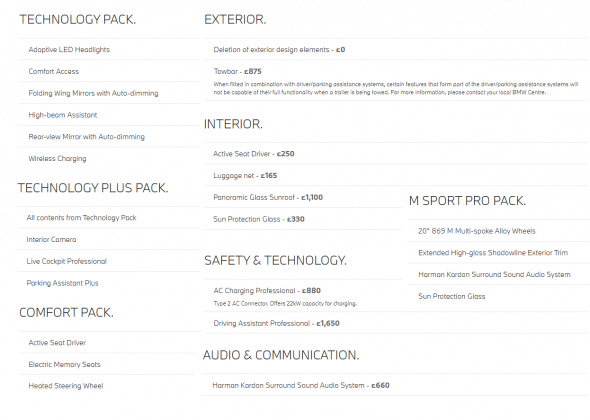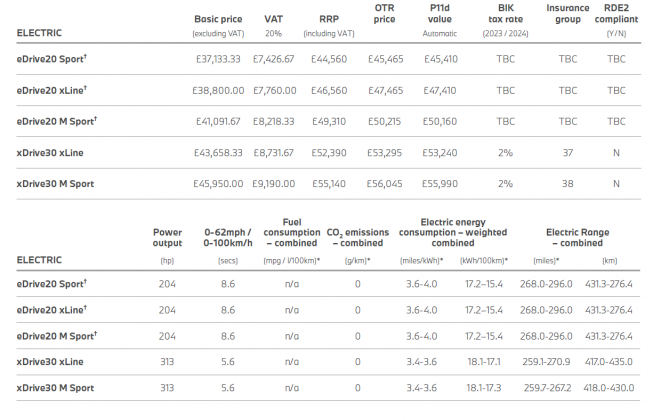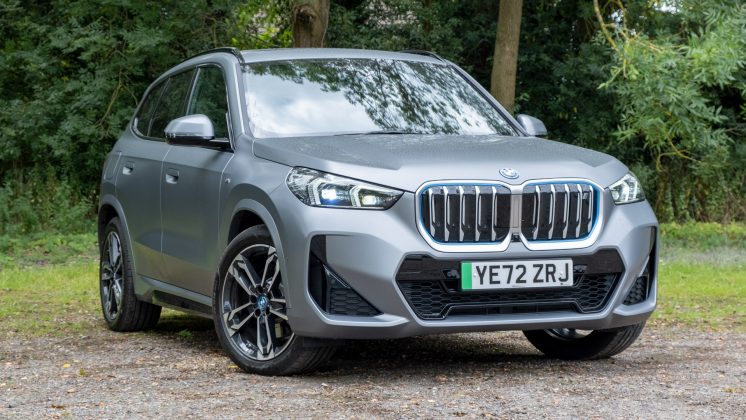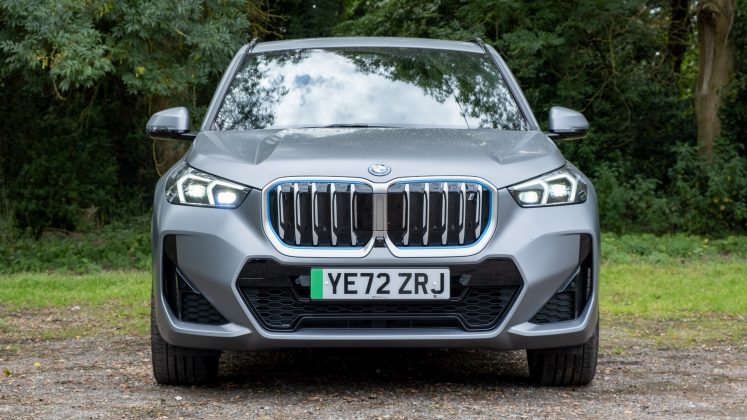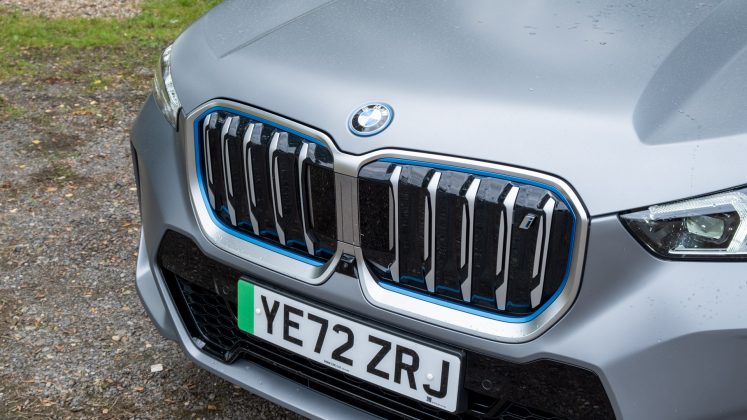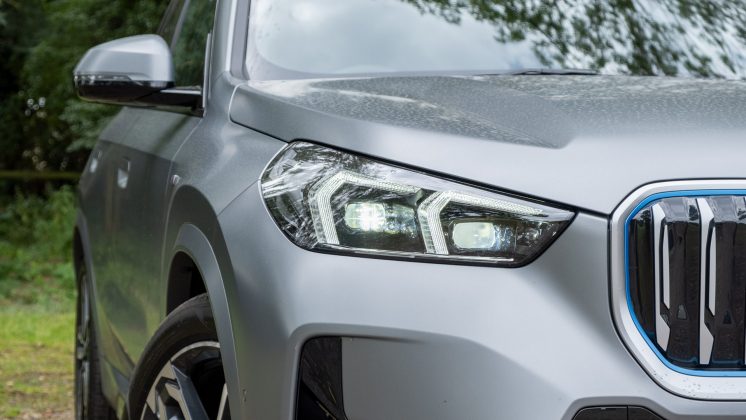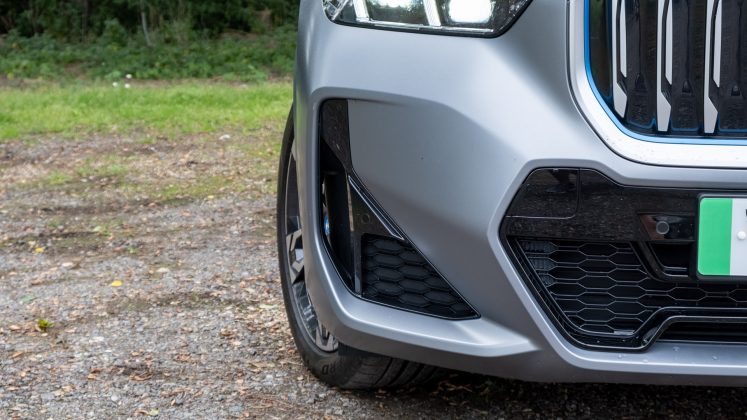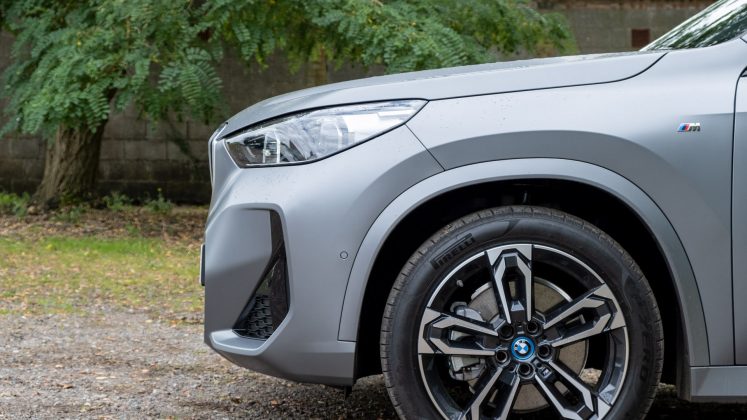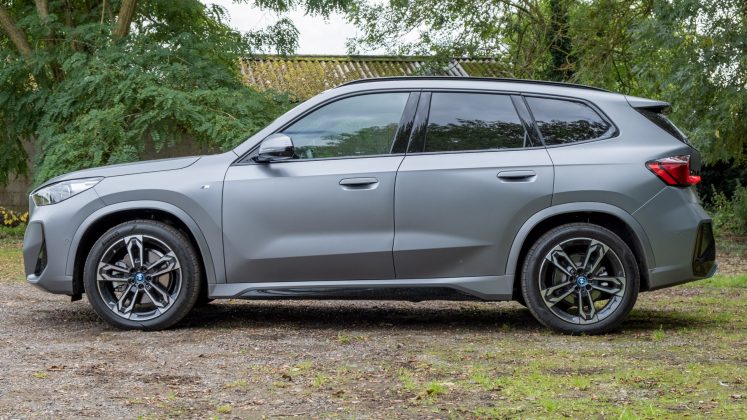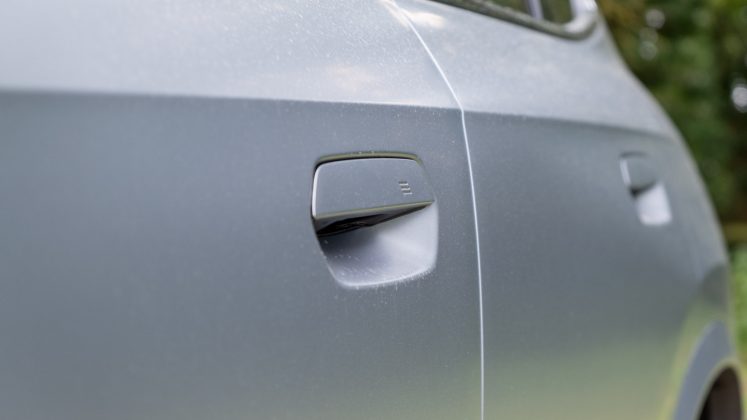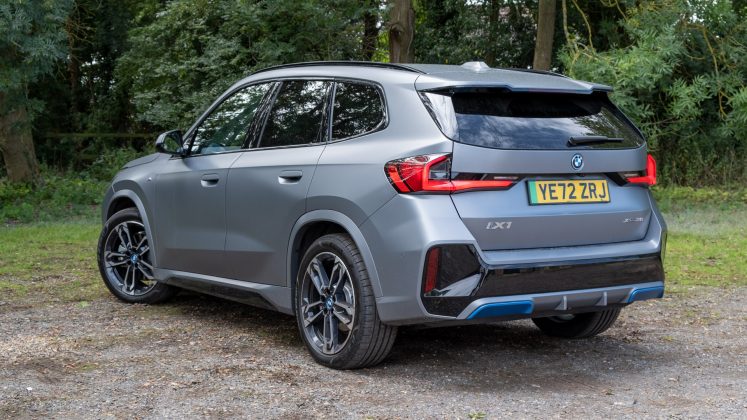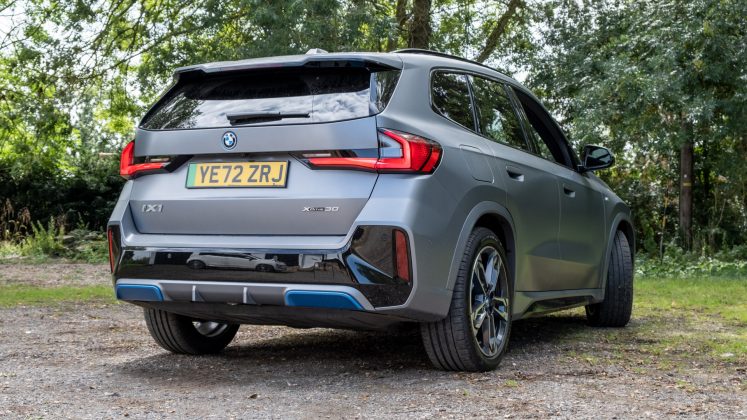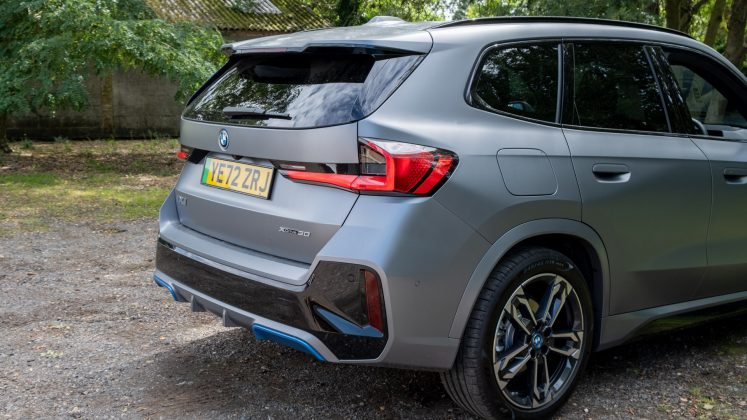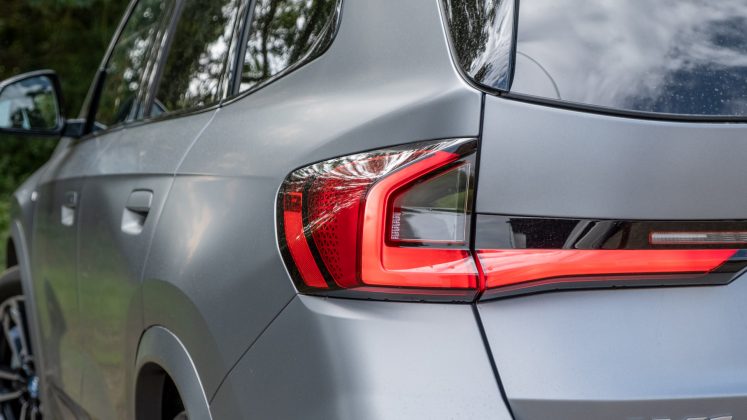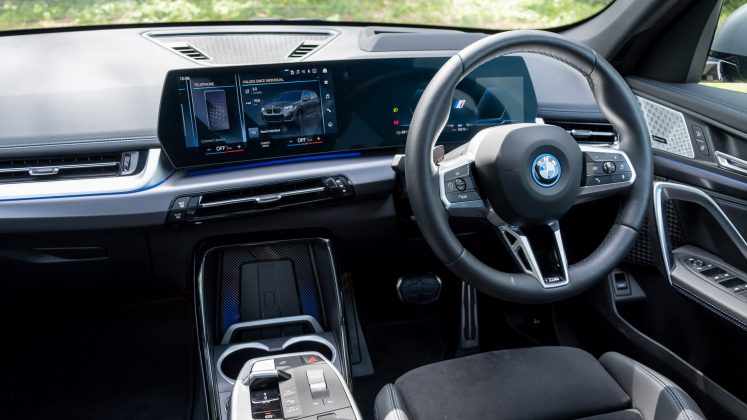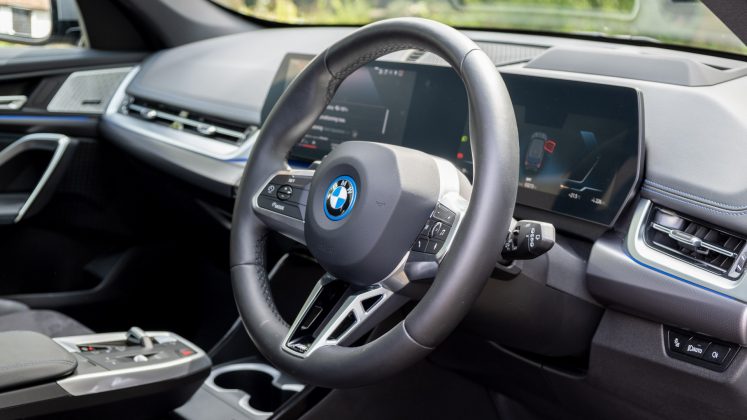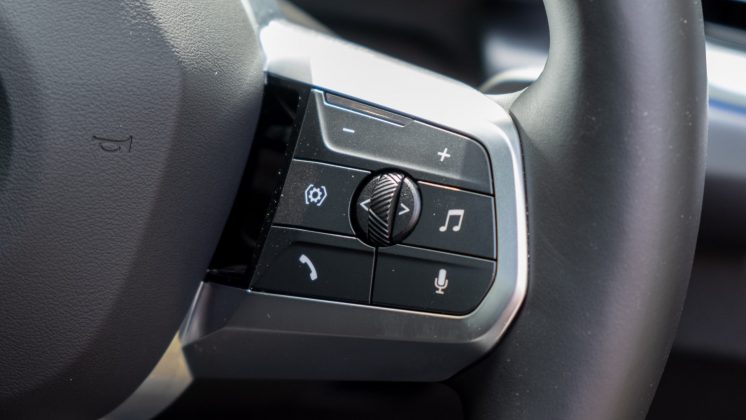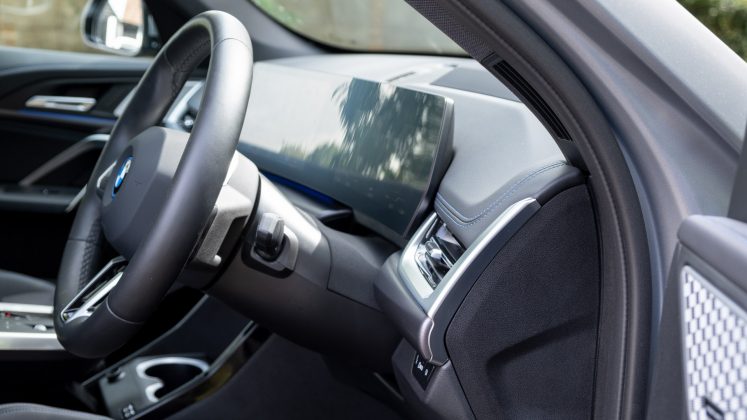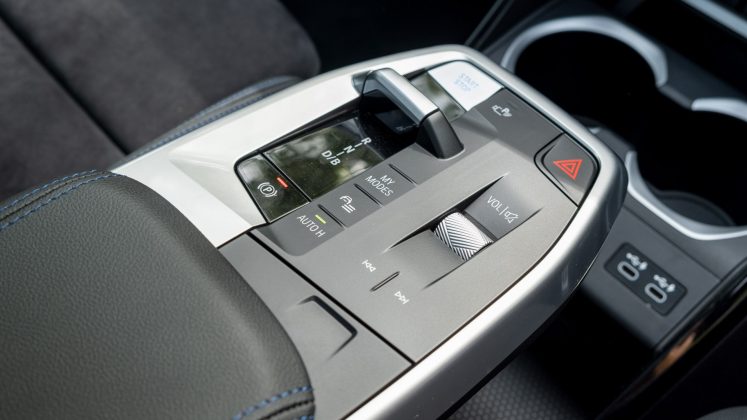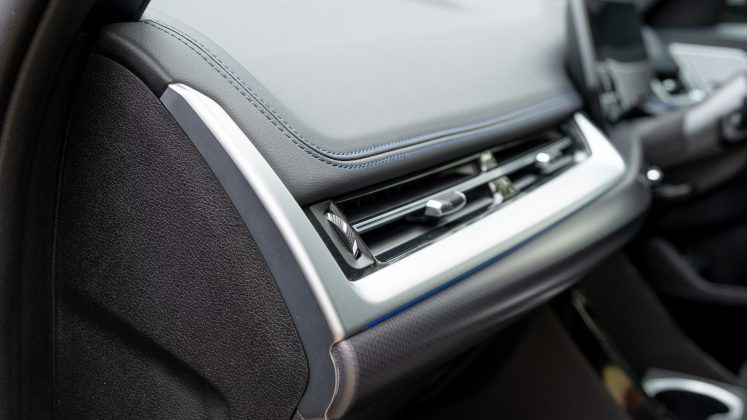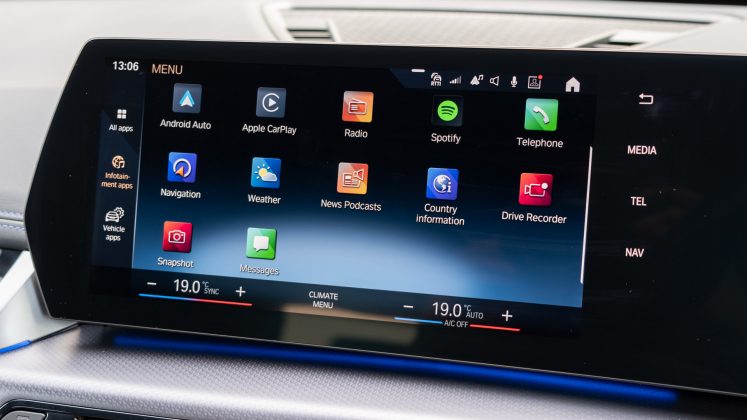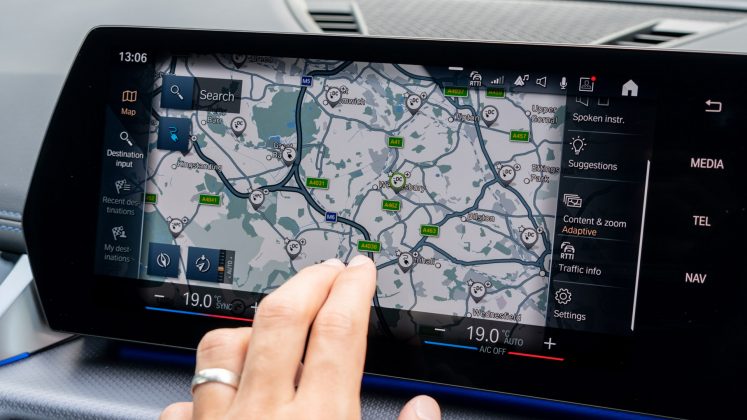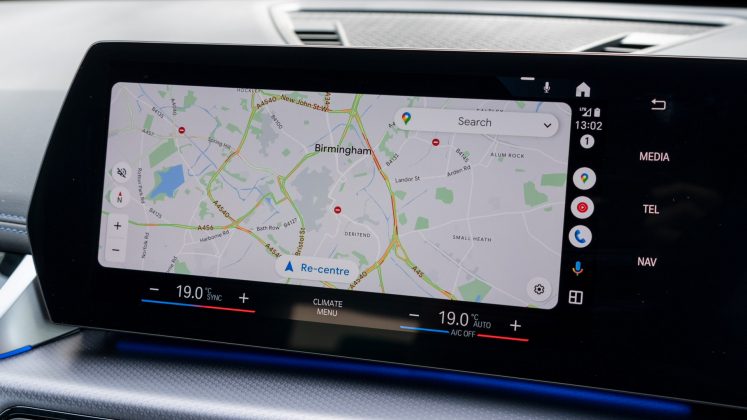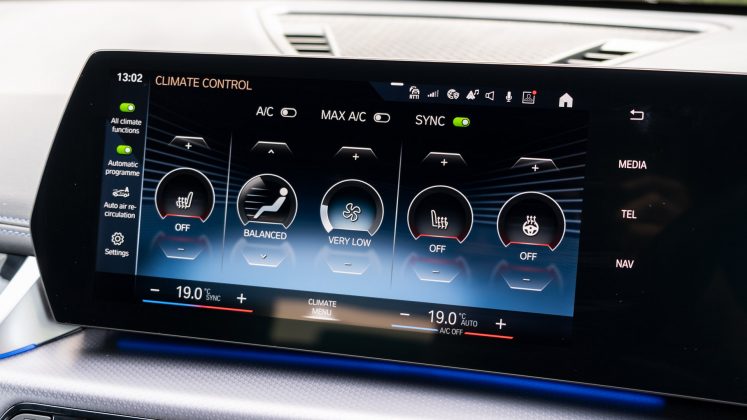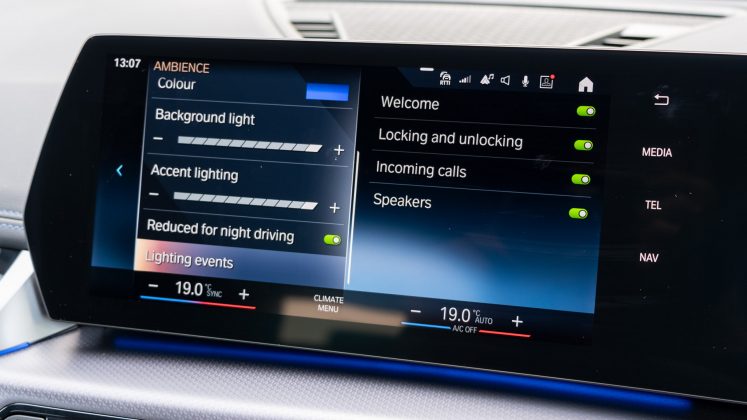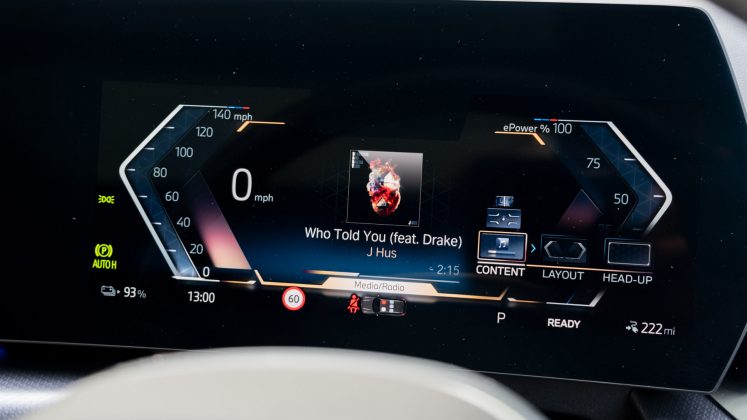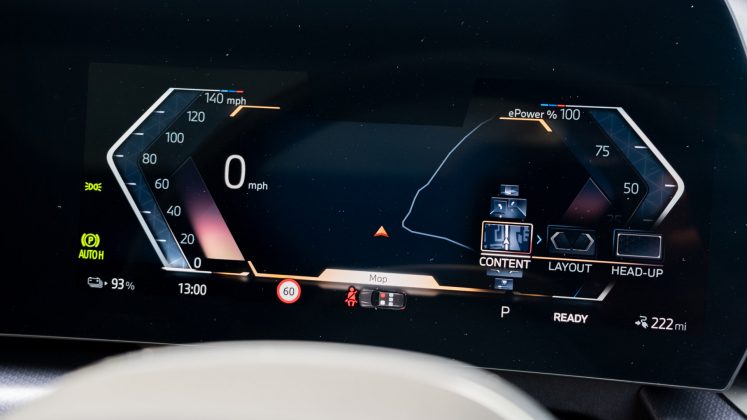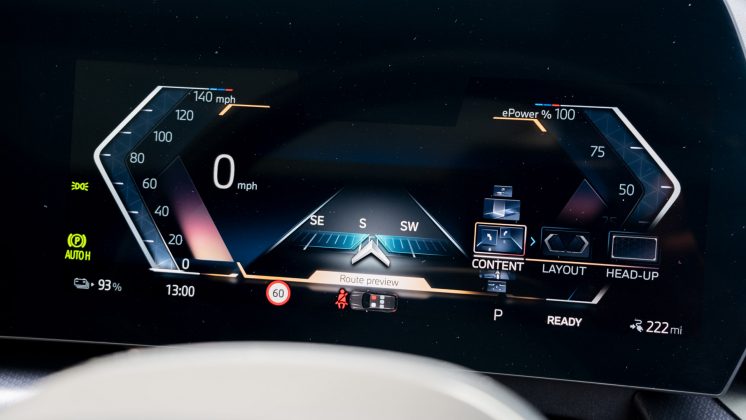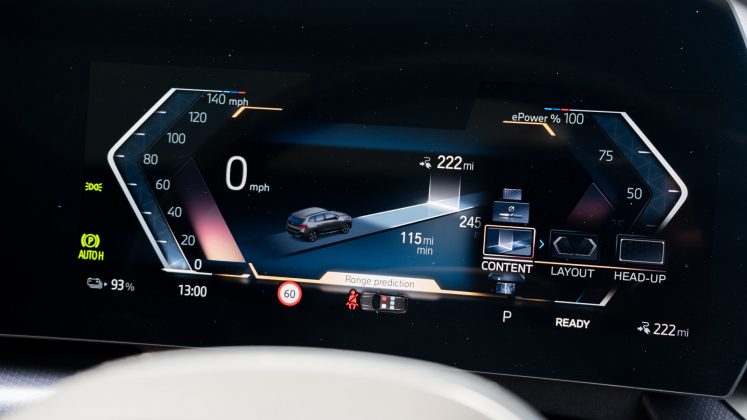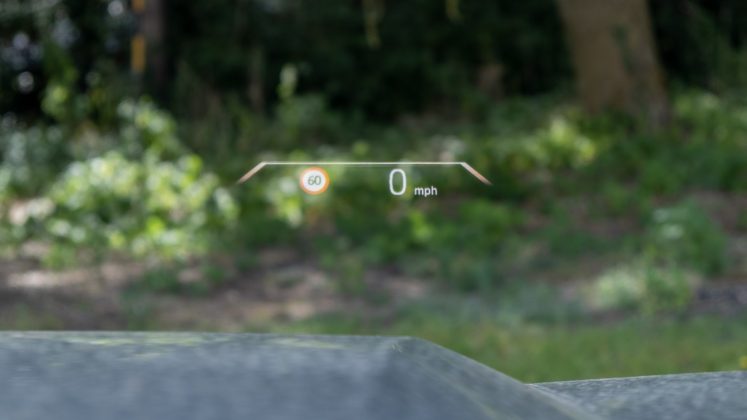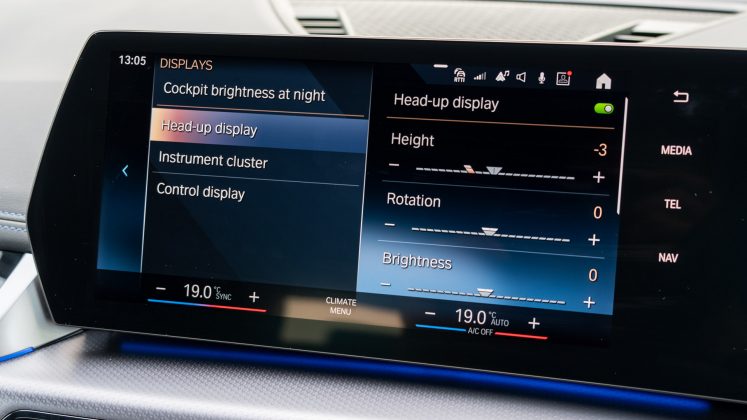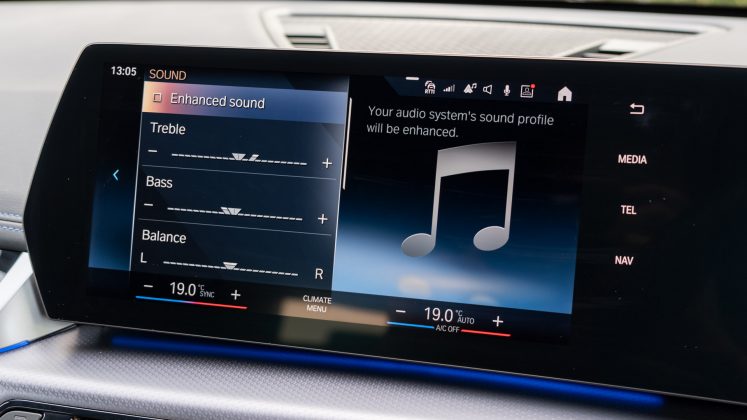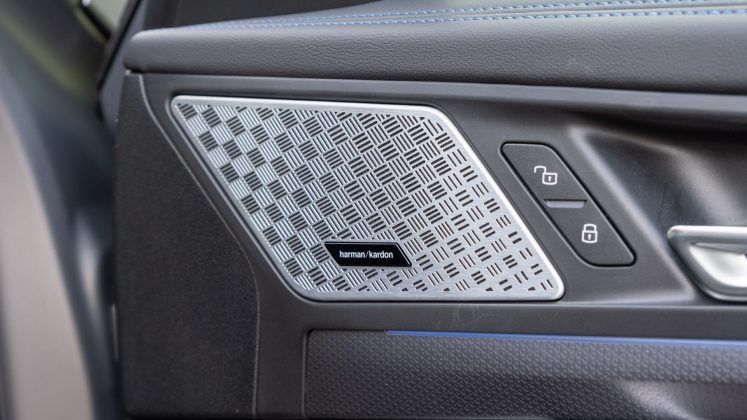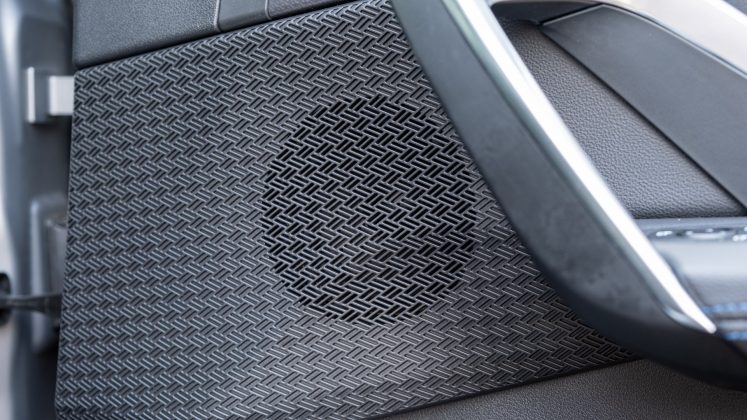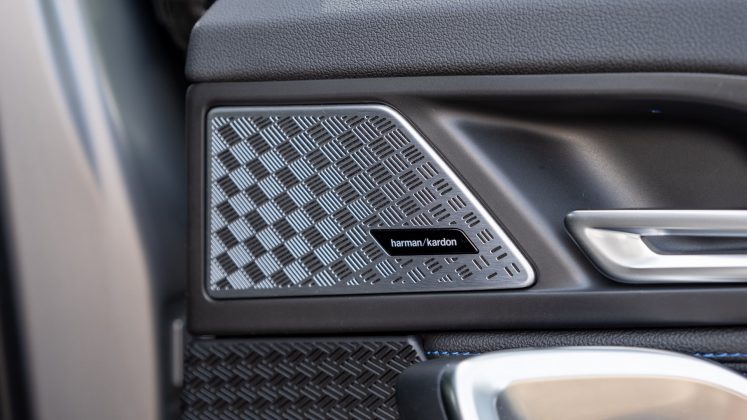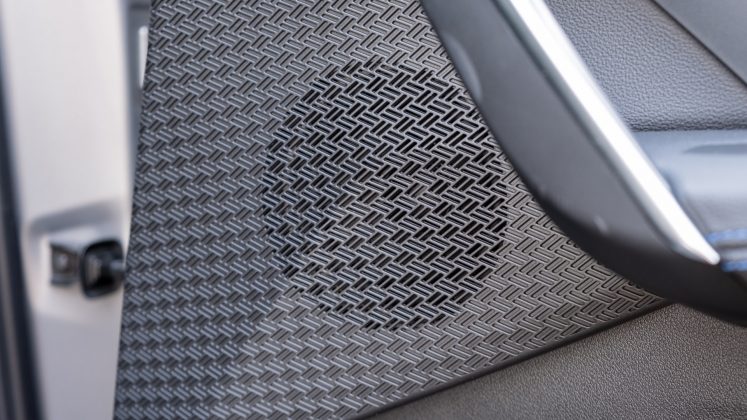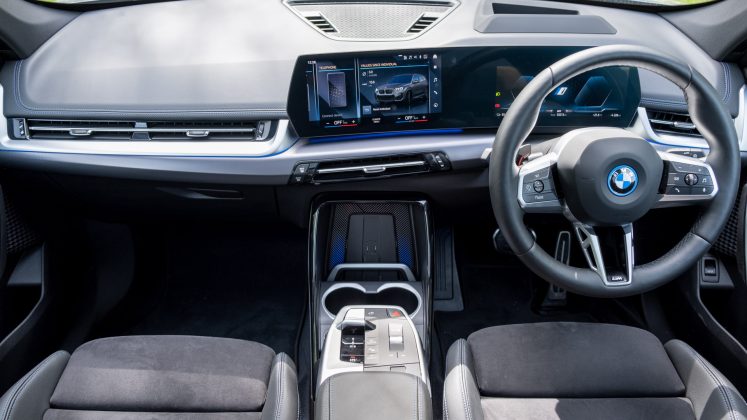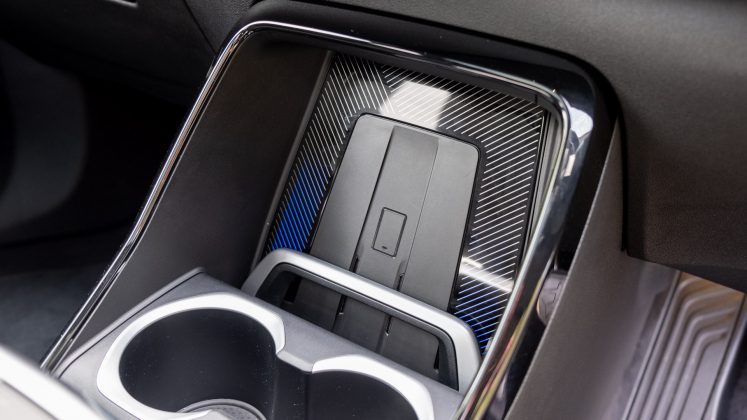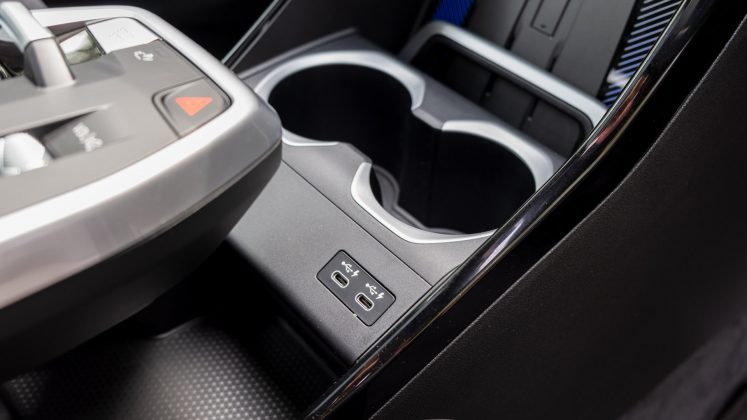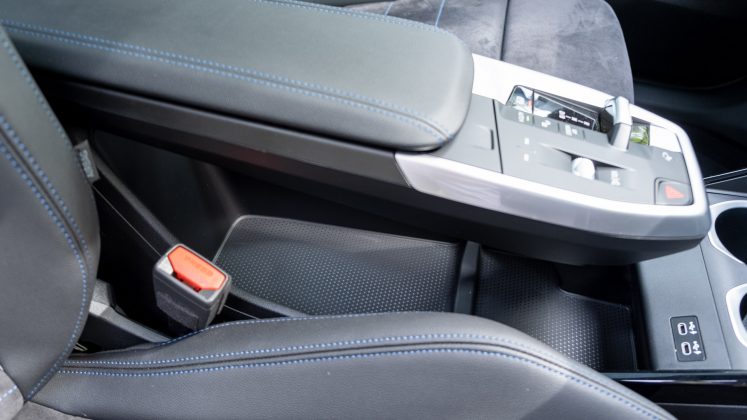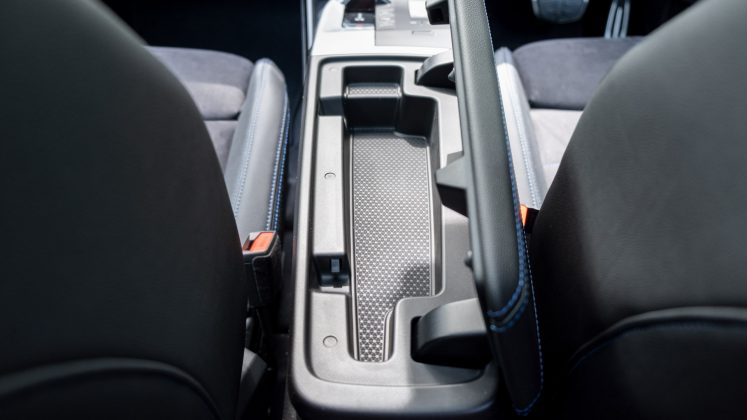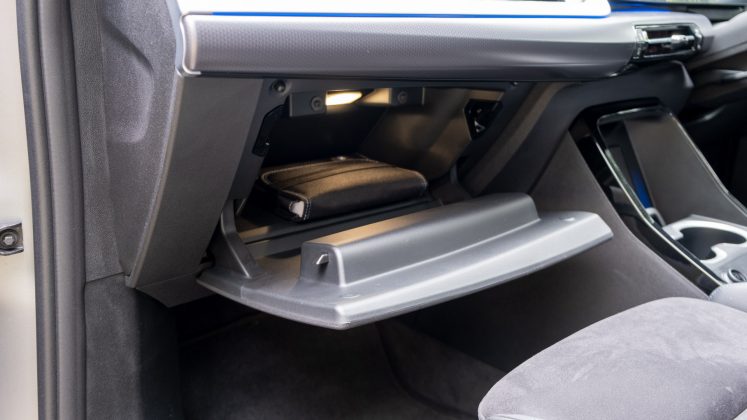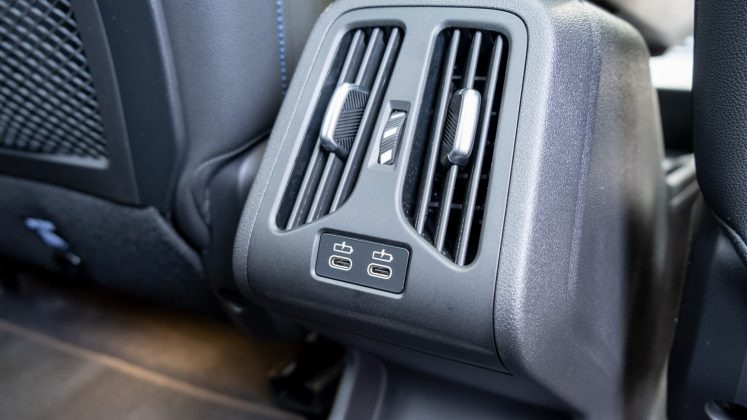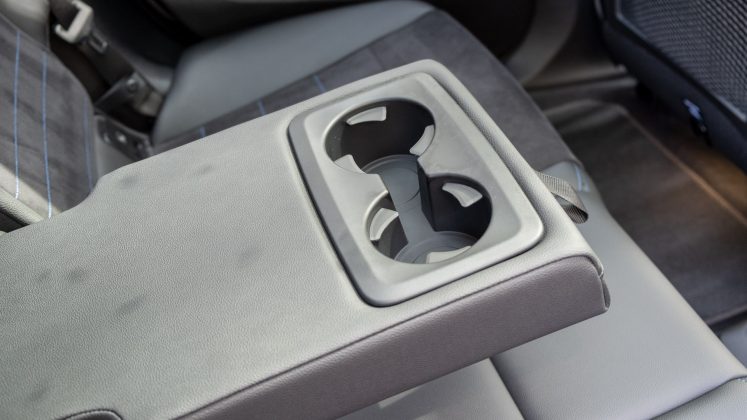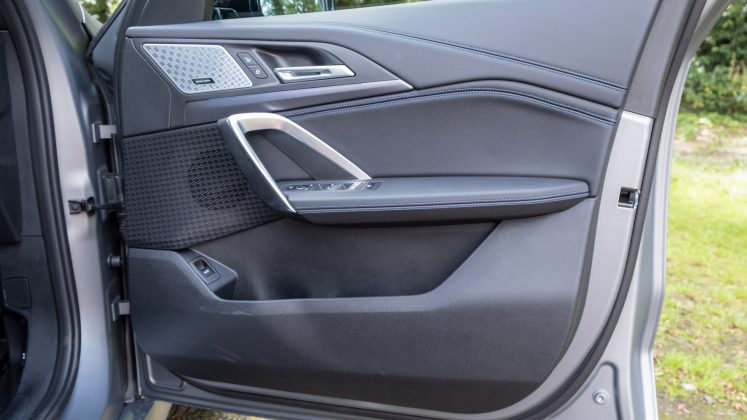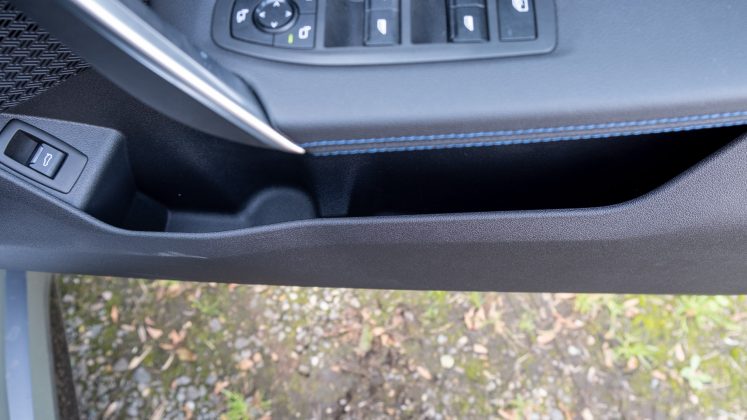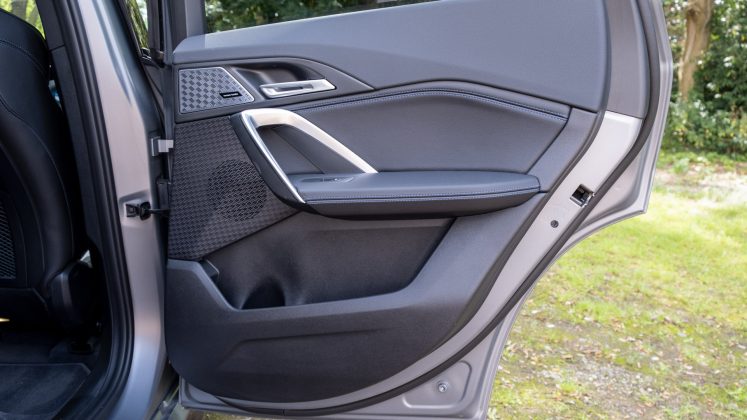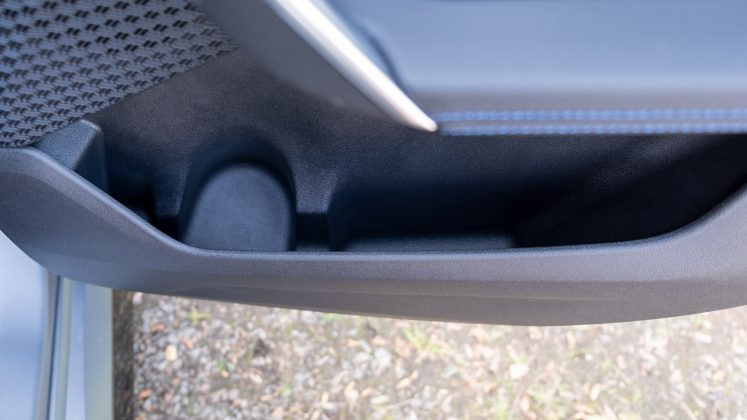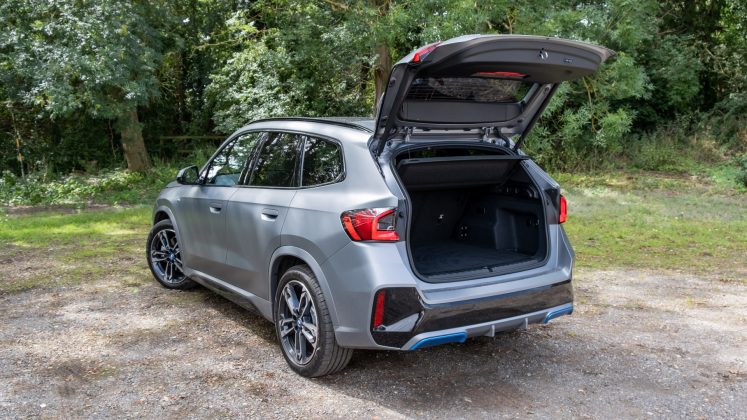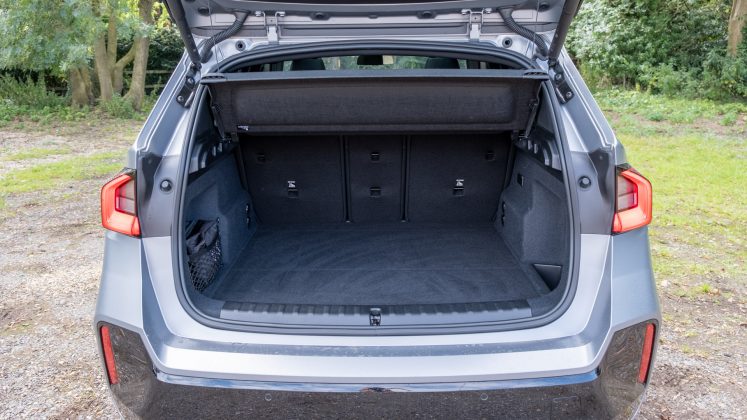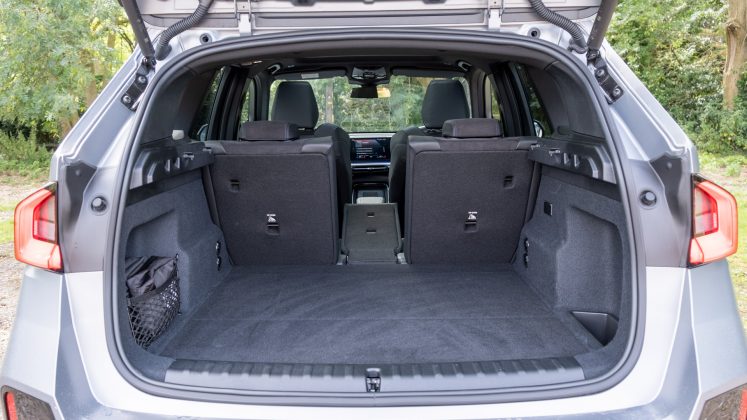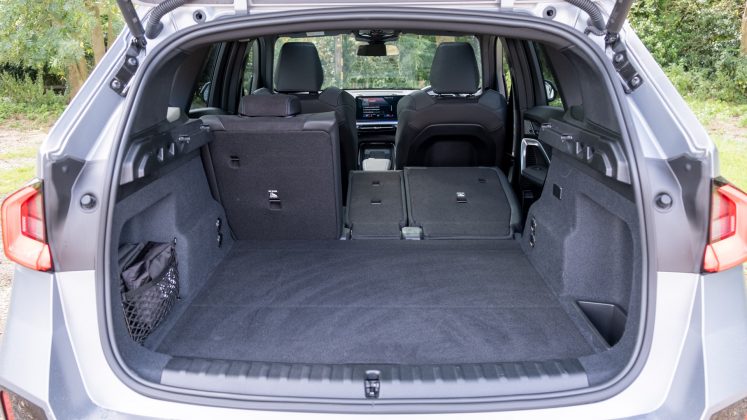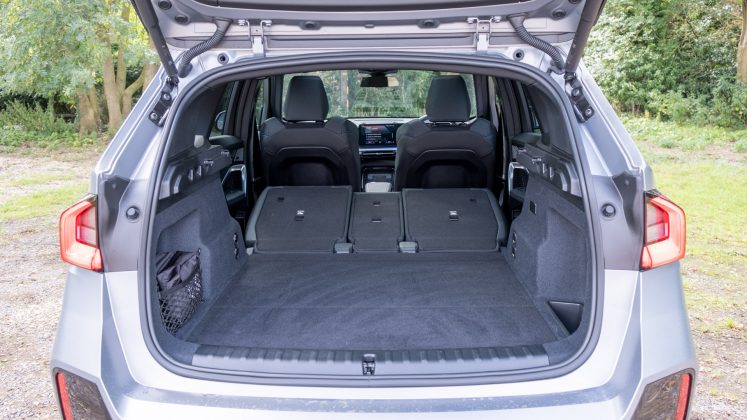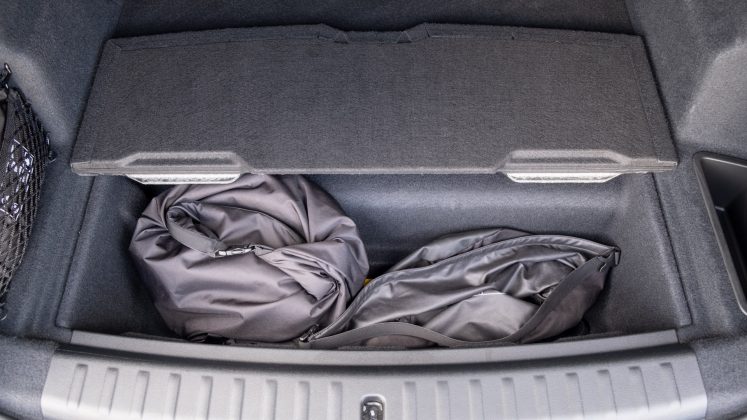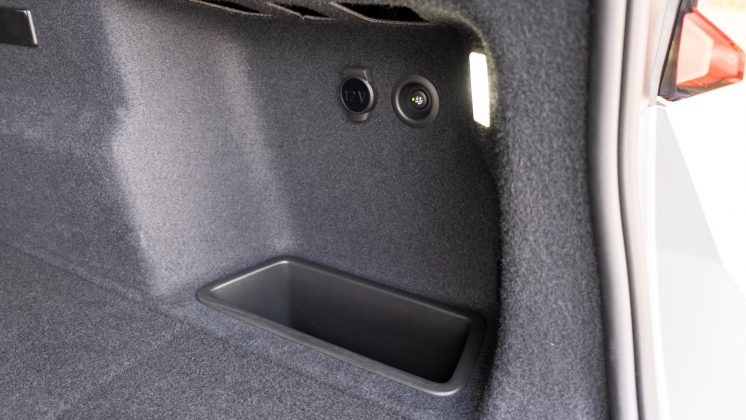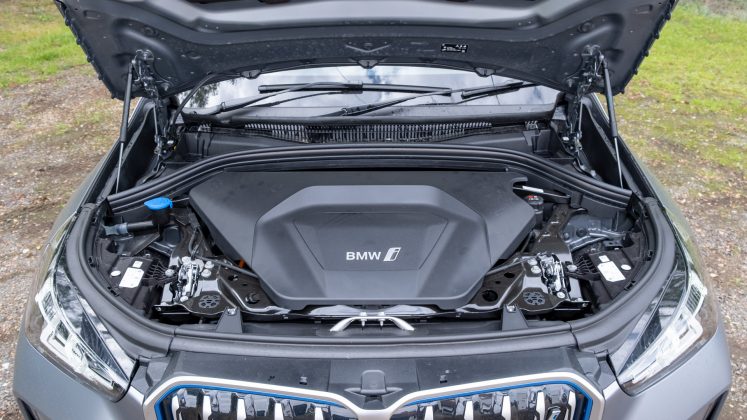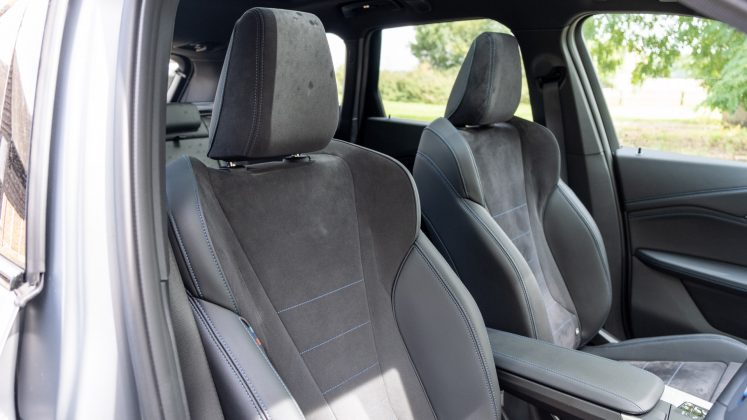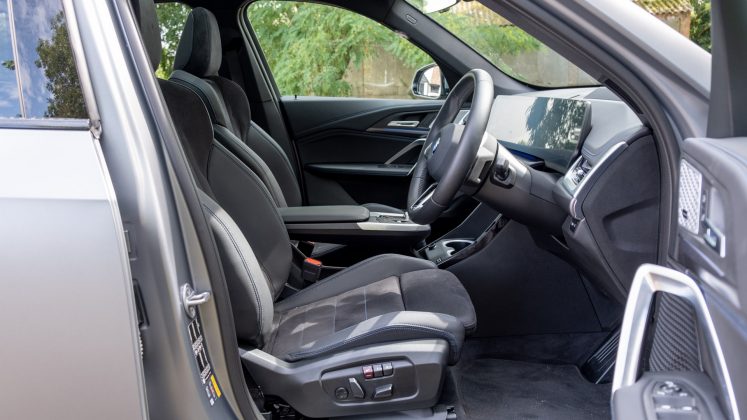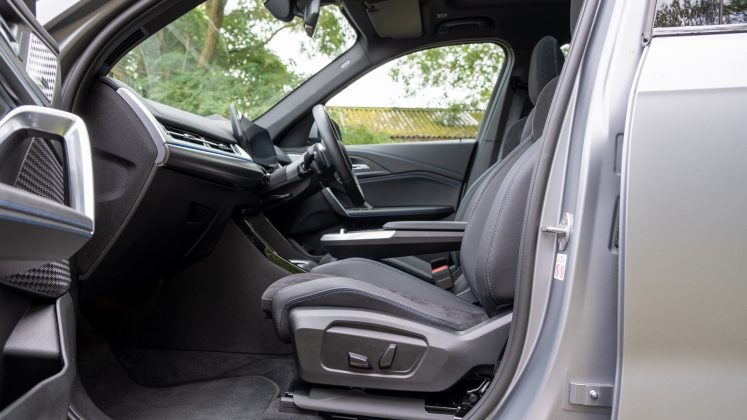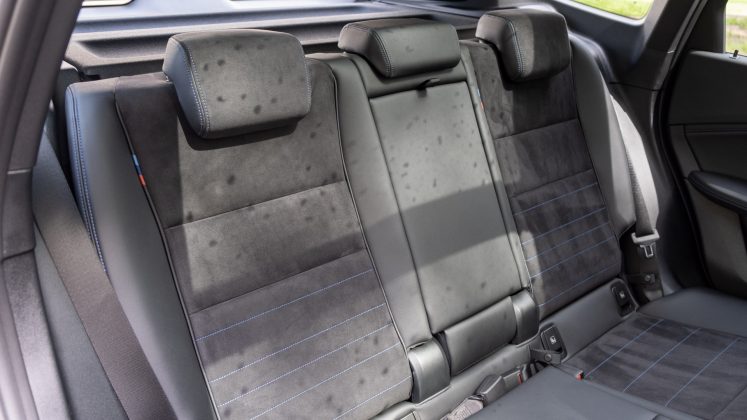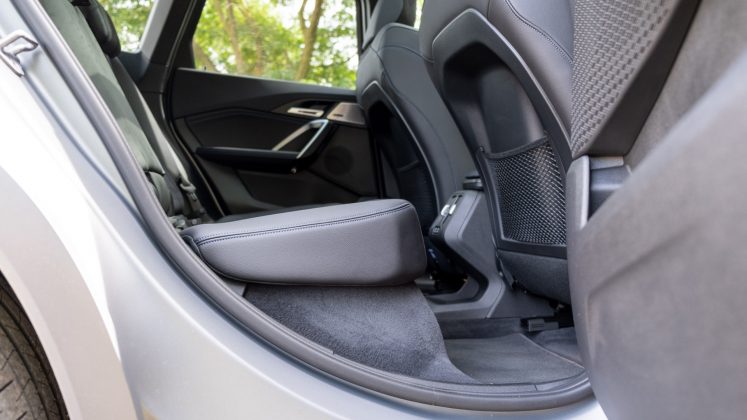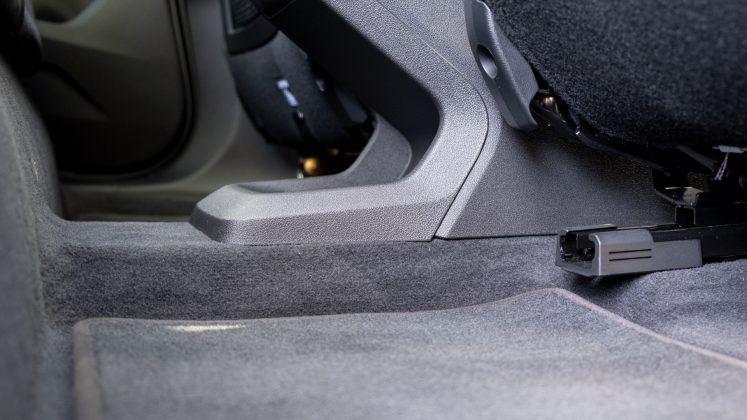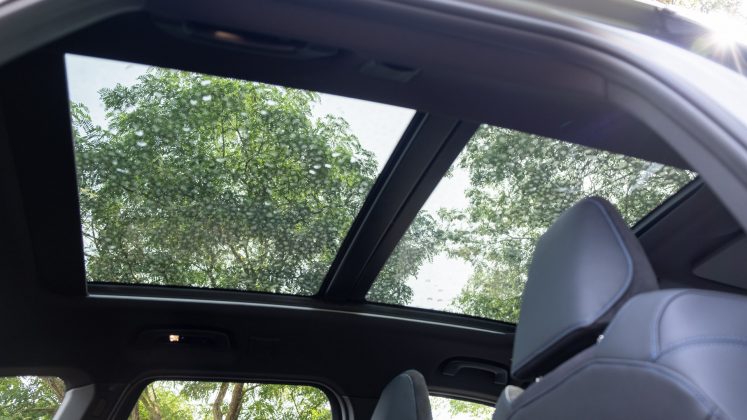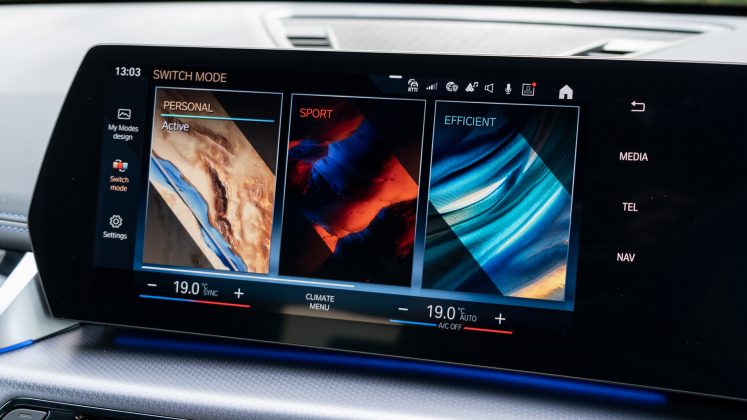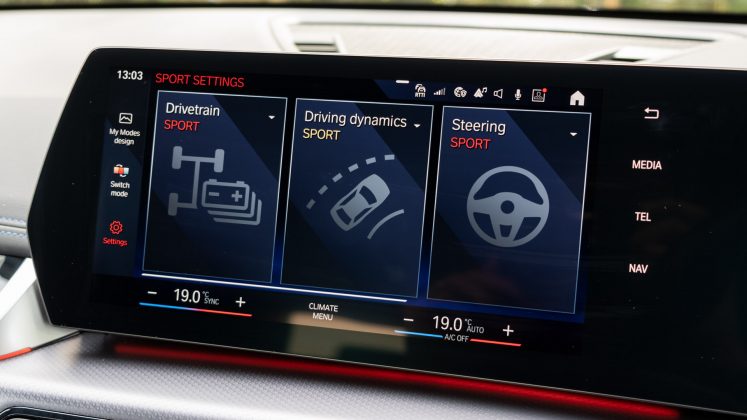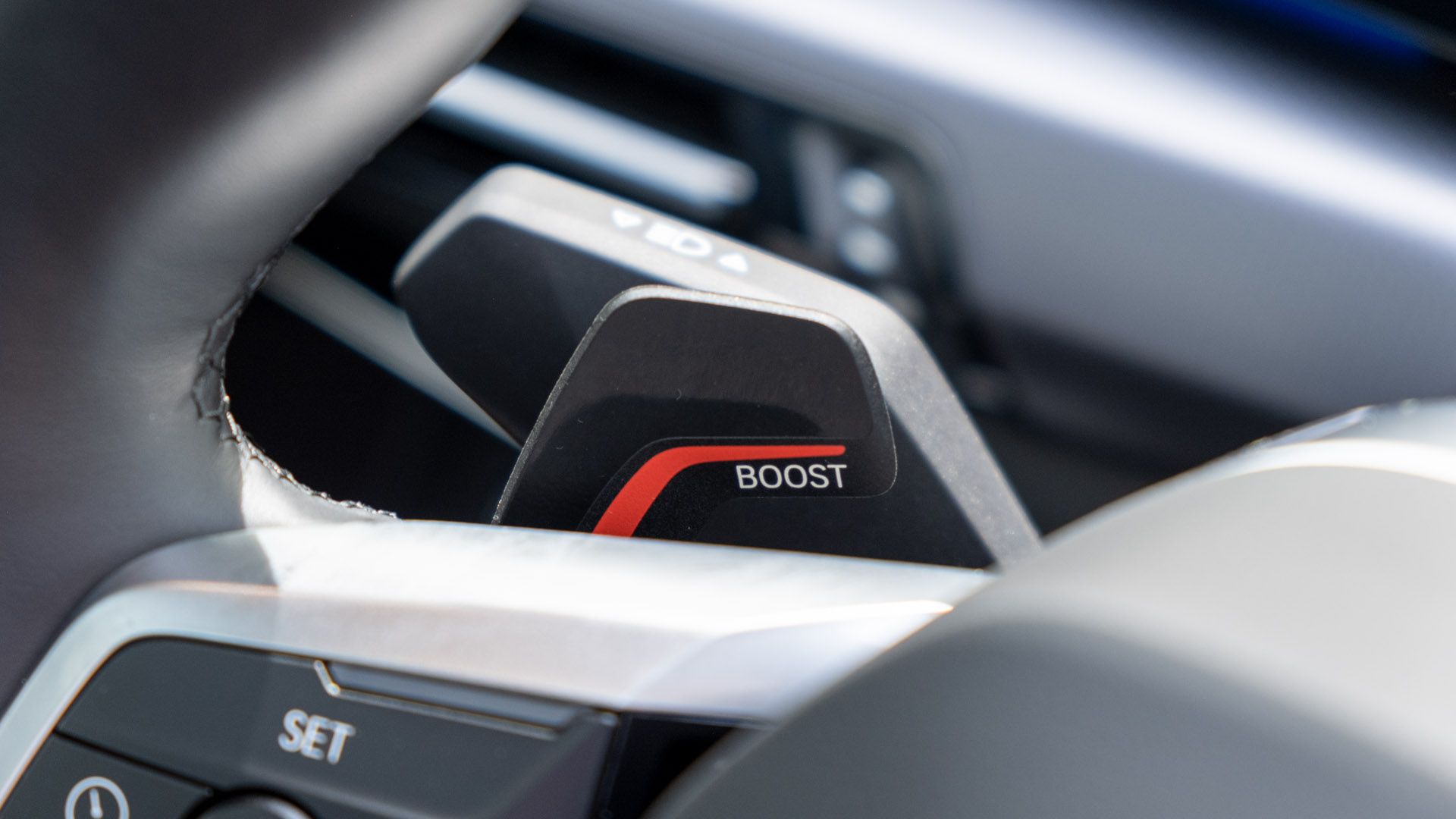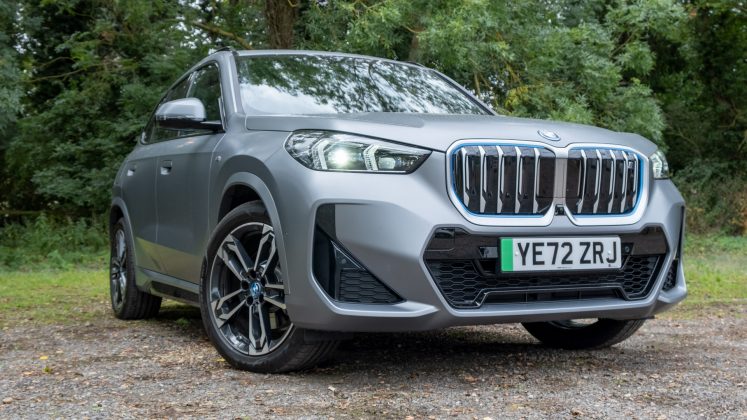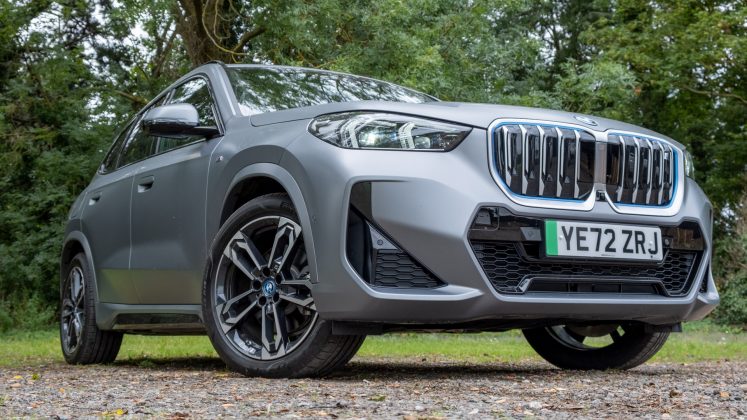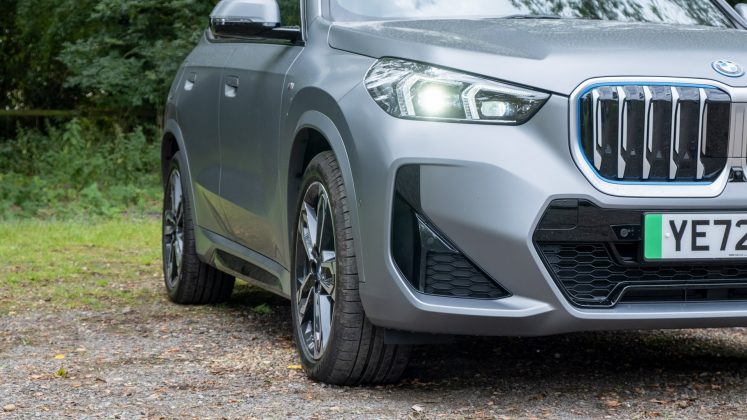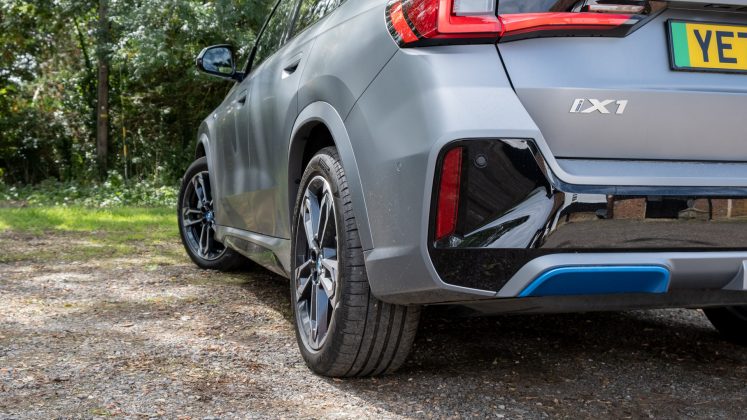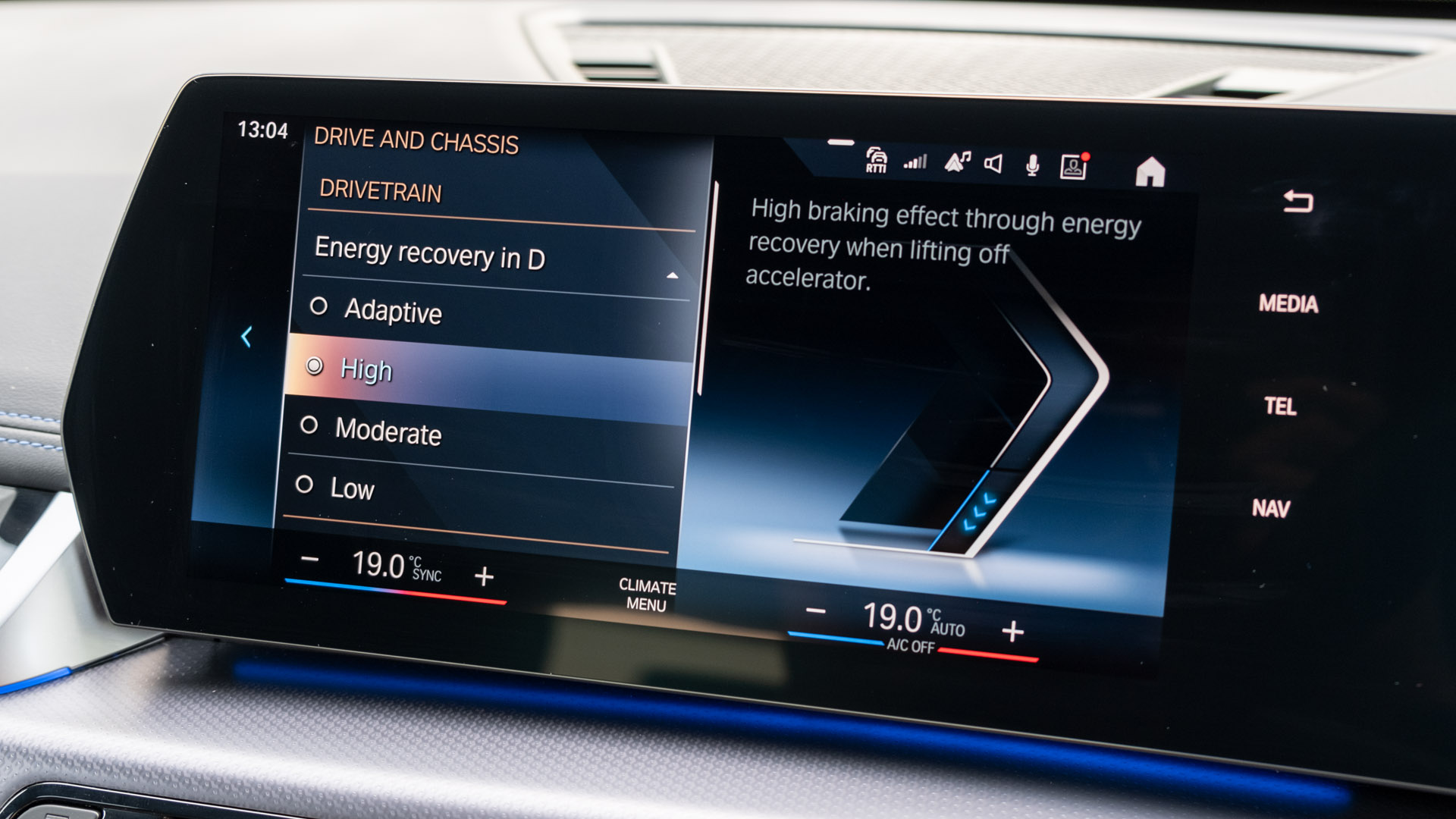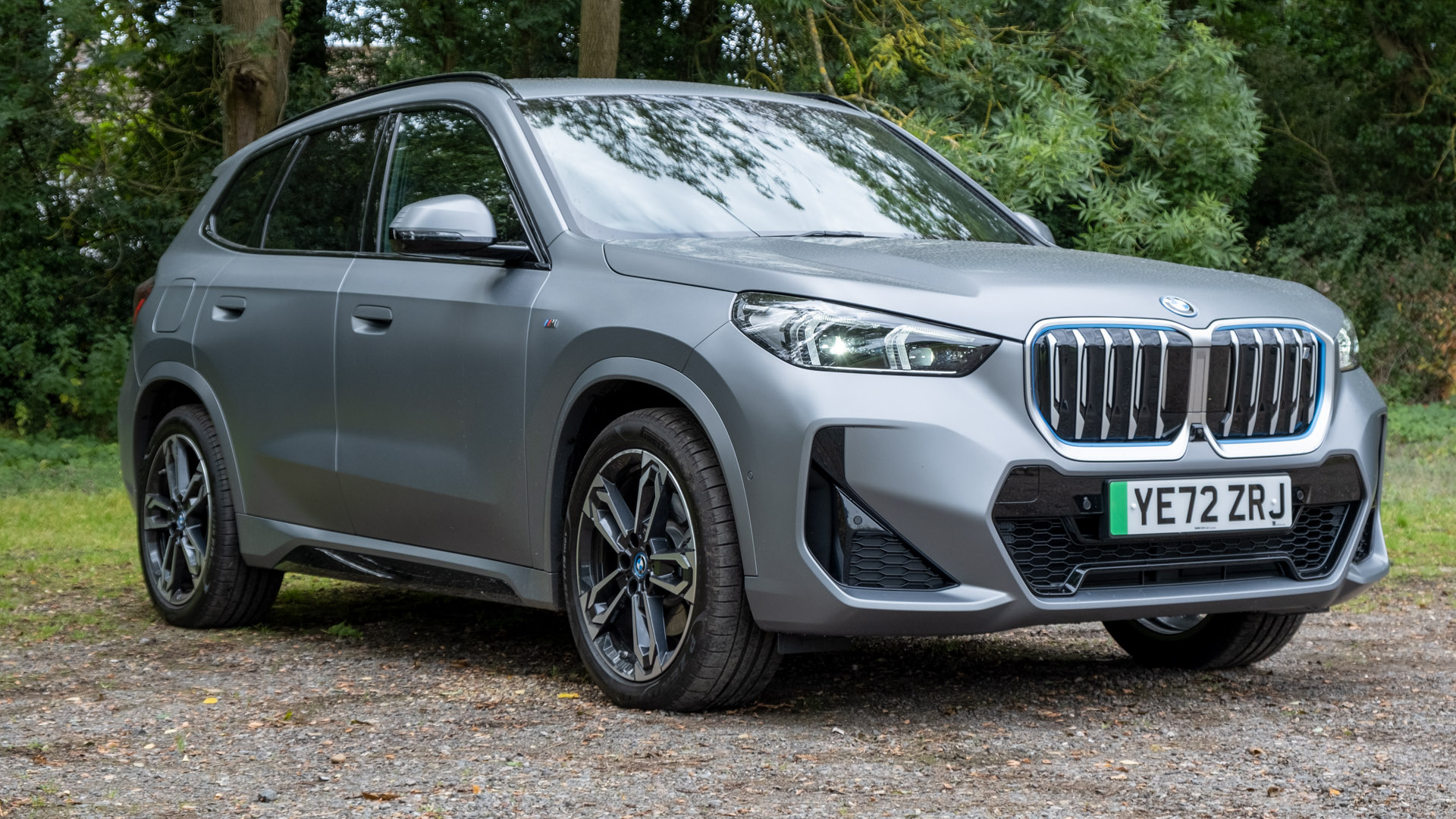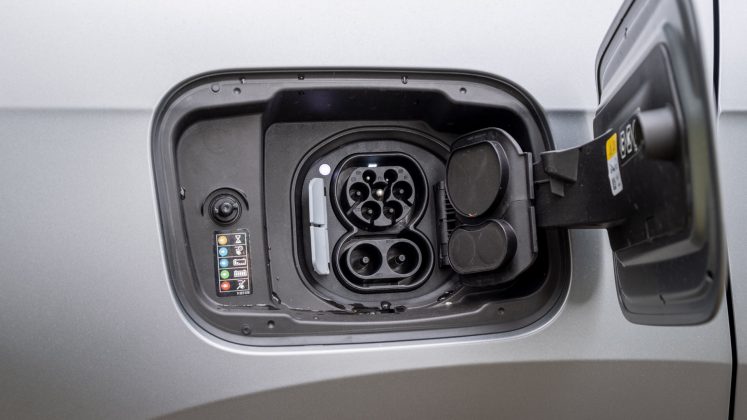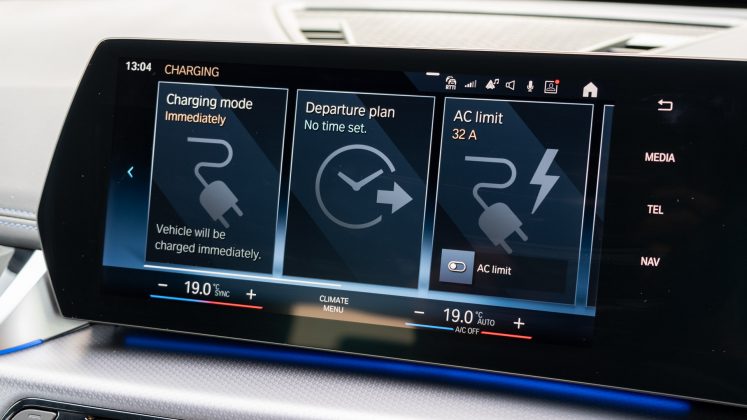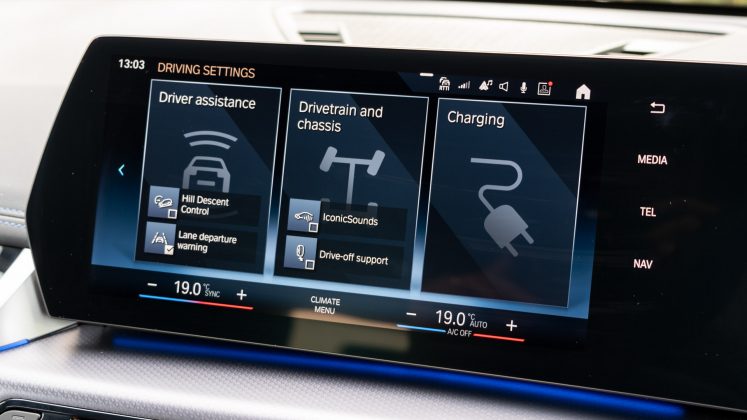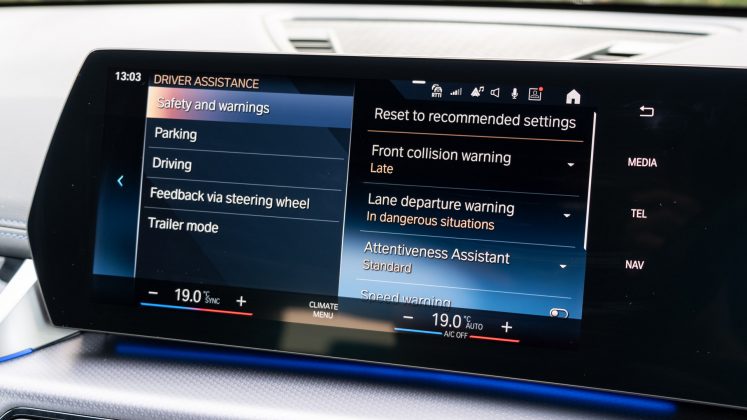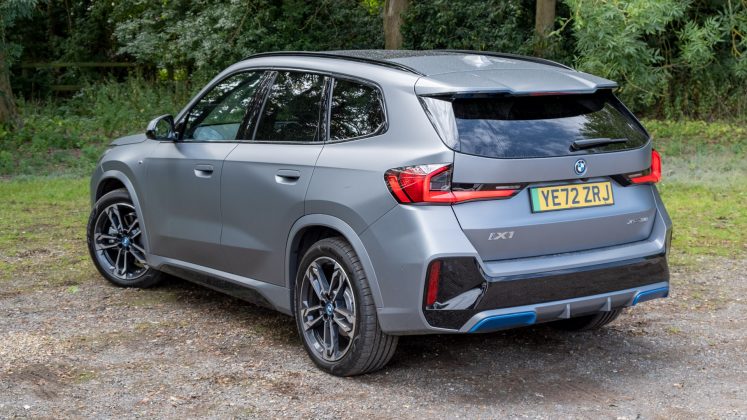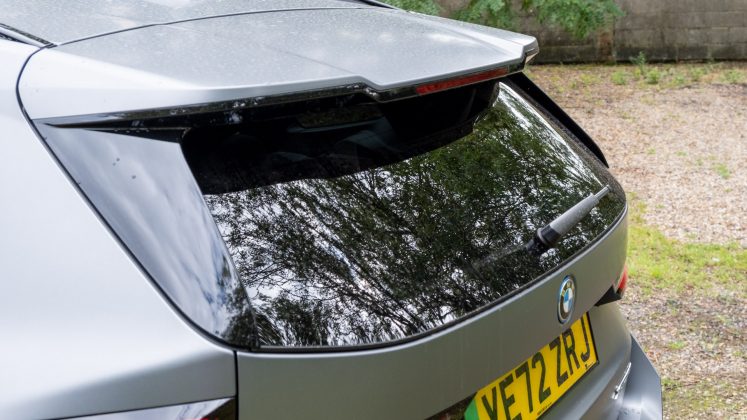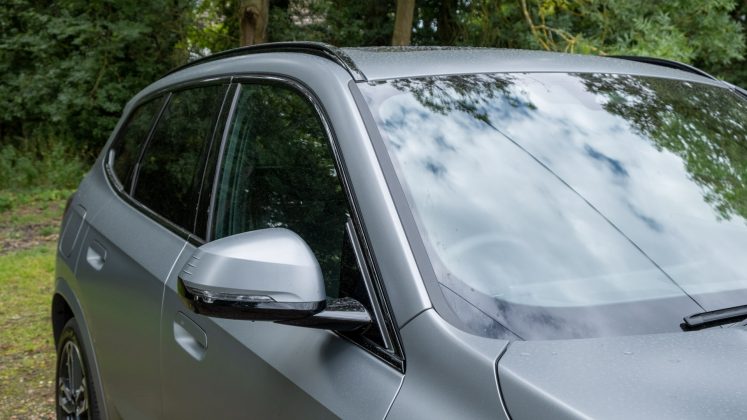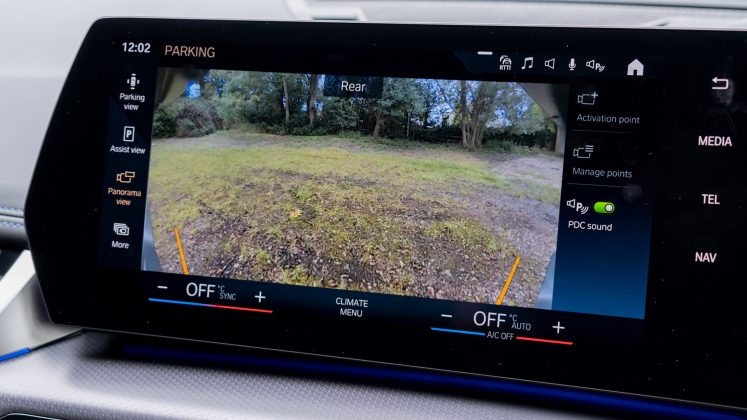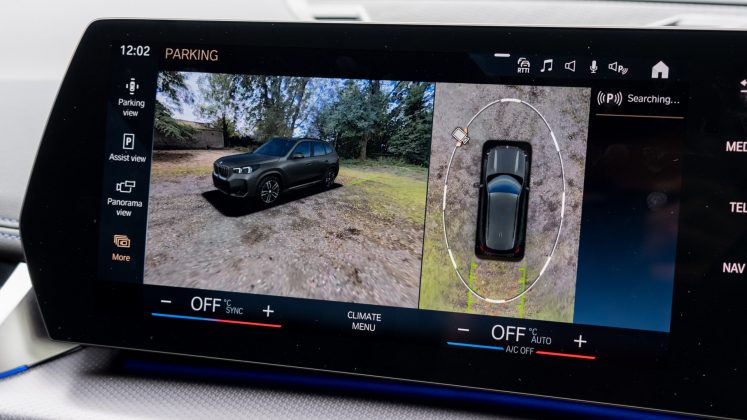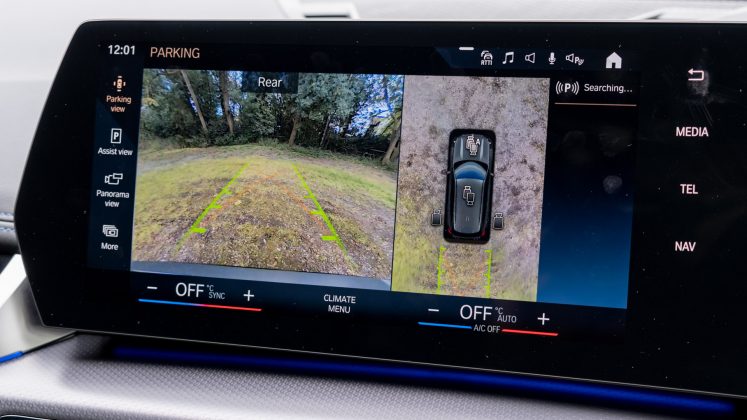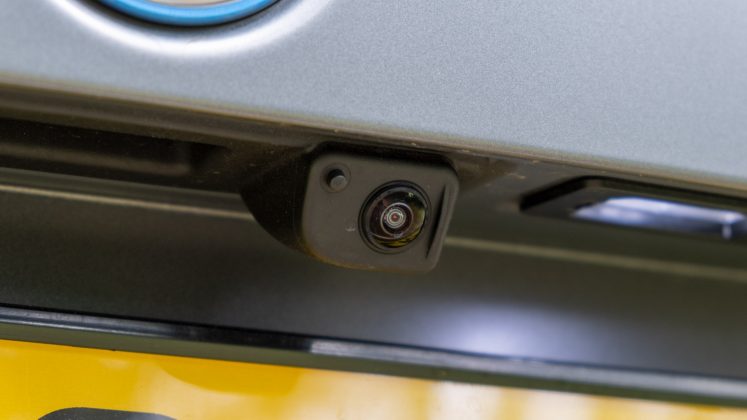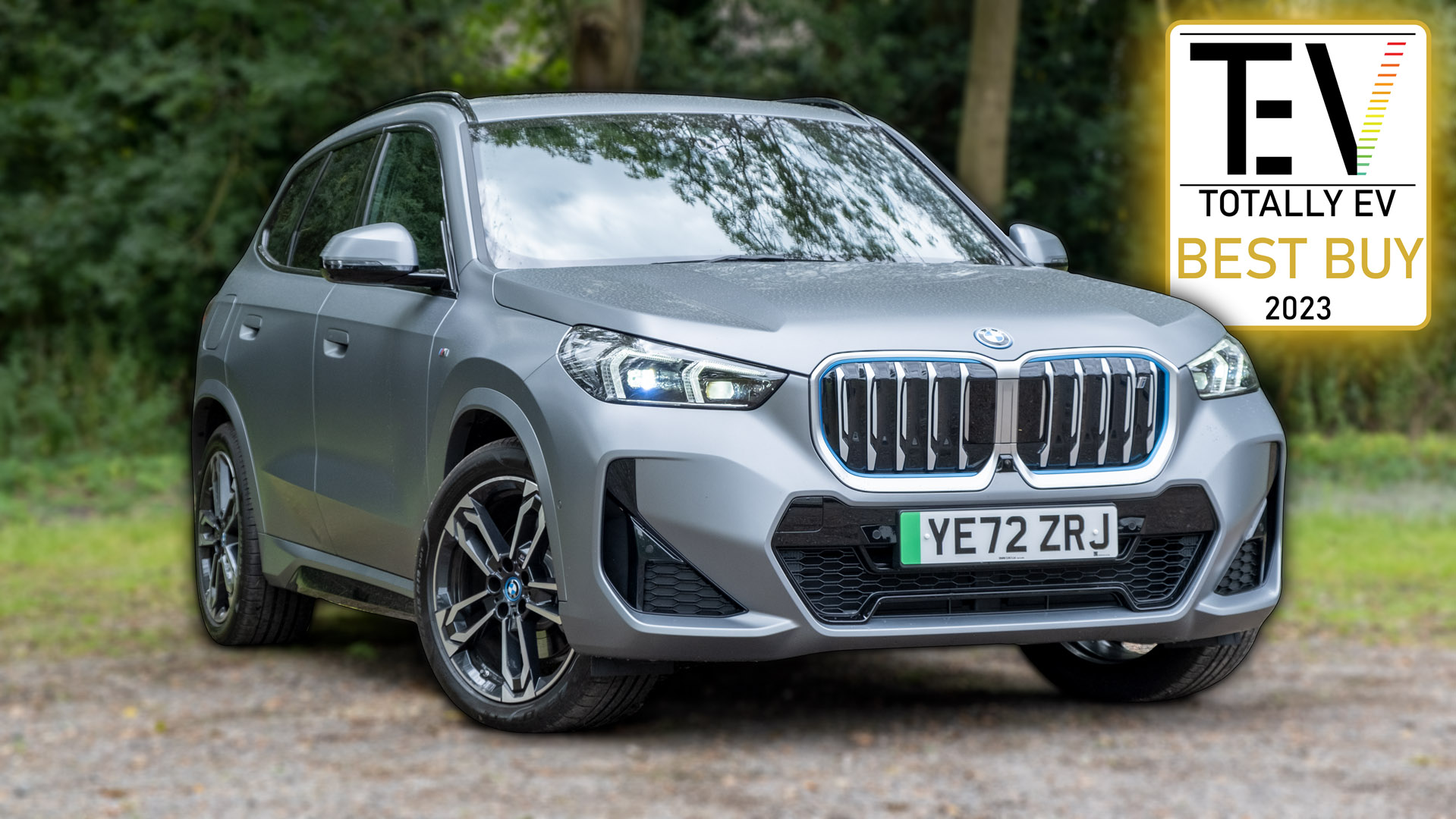The BMW X1 is in its third generation and is now available with a fully electric powertrain, which is fittingly named the BMW iX1 (also known by its model code: U11/U12). Built on the manufacturer’s UKL platform, it shares many similarities with its petrol and diesel siblings.
If you’d prefer to watch a review of the BMW iX1, head on over to our YouTube channel.
BMW iX1 price & competition
Unsurprisingly, the iX1 is dearer than the X1, which starts from £44,560 as opposed to £34,365 without options – of course, it’s not a like-for-like comparison but the all-electric variant has a higher barrier to entry.
Nonetheless, the iX1 is still competitively priced in the electric SUV market and is available in three trims: Sport, xLine and M Sport. All three are available as a front-wheel drive (FWD) eDrive20, however, the latter two are also offered with an all-wheel drive (AWD) xDrive30 configuration. A breakdown of the trims and packs can be found below (click to expand):
Note, that some of the above options are not available in all trims. At the time of writing, the M Sport Pro Pack is only available in the xDrive30 M Sport trim for £1,575. However, it’s also available with an even more comprehensive list of features in the eDrive20 M Sport trim for £2,400. The option is omitted altogether in the other models.
On review is the BMW iX1 xDrive30 M Sport with the Technology Plus Pack, Comfort Pack, Towbar, Panoramic Glass Sunroof, Luggage Net, Sun Protection Glass options, the Harman Kardon audio system, and finished in the Frozen Pure Grey colour.
Looking at the all-electric SUV market, there are numerous vehicles to consider – focusing on AWD models, here are a few of the alternatives: the Skoda Enyaq iV 80x from £51,275; the Volkswagen ID.4 GTX from £51,580; the Kia EV6 GT-Line AWD from £51,595; the Hyundai Ioniq 5 AWD Ultimate from £51,900; the Tesla Model Y Long Range from £52,990; the Mercedes EQA 350 4MATIC from £53,010; the Audi Q4 50 e-tron from £55,310; the Volvo XC40 Recharge Twin from £56,150; the Genesis GV60 Sport from £58,365; the BMW iX3 from £62,865; the Jaguar I-Pace from £66,350; the Audi Q8 e-tron from £67,800; the Mercedes EQC 400 4MATIC from £70,035; the Ford Mustang Mach-E GT from £72,830; the Tesla Model X from £95,390; and the BMW iX xDrive50 M Sport from £107,305.
Read next: Kia Niro EV review: An upgraded e-Niro?
BMW iX1 exterior review
From the exterior, the iX1 looks the part, and in many ways reminds us of the iX3, its larger sibling. However, BMW’s smaller SUV has a more aggressive stance thanks to its slim headlights and muscular-looking bonnet, which feeds seamlessly to the vehicle’s grille. The frontal profile of modern BMWs has been a controversial topic since the German manufacturer chose to widen it to appeal to certain markets. Unfortunately, the iX1 follows this nonsensical trend with a slightly oversized grille. Given it’s also a fully electric vehicle, it doesn’t serve a purpose; it’s a singular plastic piece, which is covered and available in gloss black or chrome.
Speaking of which, there are blue accents at the front and rear of the vehicle, which thankfully can be blacked out at no extra cost. As for its side profile, there are 17″ alloys in the Sport trim, 18” alloys in the xLine trim, and 19” are as standard on the M Sport model. One can upgrade to the 18″ and 19″ for £765 in the Sport and xLine respectively, whilst 20” alloys are an option for £765 in the M Sport and £1,530 in the xLine.
In terms of your colour options, an Alpine White and Jet Black come as standard, while the metallic finishes will set you back between £595-£950, while the pictured matte Frozen Pure Grey is a whopping £2,100. As for its roof load capacity, it’s rated at 100kg, with its towing capacity at 1,200kg, which is rather low in comparison to most of its rivals.
Read next: BMW iX3 review: The best driver’s feel?
BMW iX1 interior review
It’s equally stylish within the cabin, from the use of materials to the design itself, it looks and feels the part and competes with alternatives from Jaguar, Mercedes-Benz and Audi. The issue, however, is that it’s not overly practical. Climate controls are all touch-based and accessed solely from the infotainment system. Those with a keen eye will also notice that the iDrive selector is not present either, which will disappoint a few BMW loyalists.
Nonetheless, there are still physical buttons by the centre console and on the steering wheel, the latter is certainly appreciated as some manufacturers have chosen to include haptic or capacitative buttons instead.
With the manufacturer’s more modern approach, one would expect the 10.7” infotainment system to be optimised, and indeed it is. The display is vivid, extremely responsive, angled towards the driver and provides a suite of customisation (albeit a bit overwhelming due to the convoluted menu system), and supports Android Auto and Apple CarPlay over a wired and wireless connection.
Better still, navigation data from these third-party mobile operating systems feeds through to the 10.25” instrument cluster and the Head-Up Display (HUD). The former is fitted as standard across the range and is somewhat customisable, while the latter forms part of the Technology Plus Pack, which costs £2,890. It’s a shame that this cannot be added as a singular option.
What can be added on its own, however, is the 12-speaker Harman Kardon audio system that costs £660. We’d highly suggest upgrading, as it adds better dynamism and clarity at the top end over the stock six-speaker configuration. You can hear how the upgraded system performs by watching our dedicated audio review on YouTube.
Should you want to attain the best audio fidelity, you’ll want to be plugged into the infotainment system. There are two USB Type-C ports found at the front of the centre console, with the rear two that supply power only. The clever smartphone holder at the front of the cabin doubles up as a wireless charger, which is present as standard in the M Sport trim but can be added in the Sport and xLine trim by opting for the £1,680 Technology Pack.
Read next: Kia EV6 review: The Hyundai Ioniq 5 alternative
BMW iX1 storage review
This brings us to storage, which is excellent as there’s an extremely large and open area that’s found under the centre console; you’ll be able to accommodate a medium-to-large sized purse or even a small backpack. Towards the smartphone holder there are two cupholders, while at the top of the centre console, there’s a narrow compartment under the armrest.
Elsewhere, the glove box is of a decent size although could have been better optimised. Similarly, the door bins aren’t lined with any fabric, which means loose change or keys will be heard rattling around when traversing on uneven terrain. You will, however, be able to accommodate a 500ml bottle alongside small-to-medium-sized valuables. At the rear, the door bins are unsurprisingly a little more limited. To expand on storage at the back, you’ve got a pull-down armrest compartment, which reveals two cupholders.
Of course, for even more storage there’s the boot. With the seats in place, you’ve got 490 litres and with the seats folded flat, there’s 1,495 litres. Respectable figures, which should suffice for most consumers.
Here’s how its boot stacks up to its rivals: Tesla Model Y (854/2,100 litres); Audi Q8 e-tron (569/1,637 litres); Skoda Enyaq iV (585/1,710 litres); Genesis Electrified GV70 (503/1,678 litres); VW ID.5 (549/1,561 litres); VW ID.4 (543/1,575 litres); Hyundai Ioniq 5 (520/1,587 litres); BMW iX3 (520/1,560 litres); Jaguar I-Pace (656/1,453 litres); Audi Q4 e-tron (520/1,490 litres); Genesis GV60 (432/1,550 litres); Citroen e-C4 X (510/1,360 litres); Kia EV6 (490/1,300 litres); Volvo XC40 Recharge Twin (452/1,328 litres); Ford Mustang Mach-E (402/1,420 litres); Mercedes EQA (340/1,320 litres); Citroen e-C4 (380/1,250 litres); and Smart #1 (411-976 litres).
When it comes to convenience, there’s an electric tailgate with hands-free operation that comes fitted as standard, 40:20:40 rear-split folding seats, a 12V socket, fixing points, a flat loading bay and a large underfloor compartment that can accommodate the vehicle’s charging cables. Unfortunately, the removable boot load cover cannot be stored in this area. Equally, it’s disappointing that the front of the vehicle doesn’t have a storage compartment (often referred to as a frunk); this is because the iX1 is based on the X1, which houses an engine at the front instead.
We should also highlight that the rear seats are a bit of a faff to fold as you’ll need to pull on the fabric loops, which are located by the base of each seat within the cabin – a release lever in the boot would have made things a bit more practical.
Read next: Skoda Enyaq iV review: The Volkswagen ID.4 alternative
BMW iX1 comfort review
Speaking of interacting with the vehicle, the doors are a little accentuated and sharp upon closure. They also require a bit more force to shut than one might expect. It’s a very small point to make but one that we thought to highlight in our review, as it’s the first time we’ve come across such a mechanism. You can hear them in action by watching our short video on YouTube, Instagram or TikTok.
The sound of the doors might be a bit loud on the ears, but that might be due to their tight seal. Combined with excellent damping, the iX1’s cabin is serene. In fact, it’s among one of the quietest cabins we’ve ever tested, going toe-to-toe with its equally impressive sibling, the iX3 – more details and our in-cabin measurements can be found in our dedicated audio review.
This brings us to seating comfort. Here, all five seats are accommodating and soft, with the driving position also being excellent. Throughout the cabin, headroom and legroom are a non-issue for 6-foot 2-inches (188cm) individuals. However, due to the positioning of the battery pack the rear seats are diagonally wedged, which can cause discomfort on longer drives.
Further, the rear footwell isn’t flat, as there is a noticeable hump separating the rear outer occupants. While it’s not dissimilar to the petrol or diesel-powered X1, it’s not been optimised for the fully electric model, which doesn’t have a transmission, thus not requiring this section altogether.
Aside from all of this, the front seats are adjustable and are heated as standard too. Should you want a heated steering wheel, an active driver seat that promotes better ergonomics, and an electronically adjustable driver’s seat with memory function, you’ll have to splurge out £1,105 on the Comfort Pack. As highlighted earlier, our tested model is fitted with a panoramic sunroof, which costs an additional £1,100.
In terms of your upholstery, Cloth Anthracite is featured in the Sport trim, perforated Veganza in the xLine (a £795 option in the Sport trim), while the M Sport features Alcantara Veganza as standard. Leather upholstery can be selected for an additional £1,150.
Read next: Citroen e-C4 review: Most comfortable SUV?
BMW iX1 performance review
As for driving comfort, it’s excellent when cornering at speed thanks to the vehicle’s suspension setup. The tested xDrive30 features M Adaptive Suspension as standard, which has a stiffer spring and damper setup with the vehicle also sitting 15mm lower.
The result is that body roll is kept down to a minimum and with M Sport steering also present, the iX1 provides the best driver’s feel in its class. Indeed, it betters its sibling, the BMW iX3, the Jaguar I-Pace and the Audi Q8 e-tron with its engaging and responsive steering input, which is especially felt in the Sport or Sport Plus driving modes.
This level of connection does come at a price, however, as you’ll be able to feel the road underneath you with feedback from the road that drives itself into the steering column. In this respect, it’s no match to the floaty soft Citroen e-C4 or e-C4 X, nor the adaptive air suspension that’s found in the Audi Q8 e-tron. Here, the BMW iX1 isn’t the most comfortable SUV to drive around town, as the potholes, speed bumps and anomalies aren’t masked.
So, what about when it comes to performance? The eDrive20 has a singular motor powering the front wheels, which combines with the 64.7 kWh battery pack to output 150 kW (204 hp) of power and 250 Nm of torque. It’s claimed to get to 62mph from a standstill in 8.6 seconds and has a top speed of 105 mph. The xDrive30 on review, has two electric motors, one on each axle that power all four wheels. The extra motor combined with the same-sized battery pack outputs 233 kW (313 hp) of power and 494 Nm of torque, giving the vehicle a claimed 0-62mph time of 5.6 seconds and a top speed of 112 mph.
Using Racelogic’s Performance Box Touch, we had the xDrive30 M Sport tested from 0-20mph in 1.42 seconds, 0-30mph in 2.13 seconds; 0-60mph in 4.96 seconds and from 50-70mph in 2.55 seconds. Indeed, the dual-motor iX1 is blisteringly quick.
Note, that these figures were attained in Sport mode with Boost enabled. By momentarily shifting on the singular flappy paddle found behind the wheel, one attains peak performance no matter which drive mode you’re in. This is only present in the M Sport trim, however, in the xLine trim you will get the maximum amount of torque and power in Sport mode; see Boost mode as a shortcut to max performance.
All the vehicle’s power is also smoothly delivered to both the front and rear axles; the xDrive30 operates on an all-wheel drive (AWD) configuration, which gives plenty of confidence when cornering at speed or while traversing uneven terrain. Braking performance is also impressive, with the ventilated front and rear disc brakes providing excellent stopping power. Most fully electric SUVs are lacking in this particular department, but it’s good to see the German manufacturer has fitted the appropriate equipment.
Read next: Volkswagen ID.5 review: Germany’s best electric SUV?
Of course, there is also regenerative braking, with the manufacturer claiming one can reattain up to 120 kW of energy via the brake pedal. Through the infotainment system, you can select the preferred amount of energy recovery while driving in D mode: Adaptive, High, Moderate and Low. Unfortunately, there’s no means of changing this conveniently through the infotainment system and none of the aforementioned modes provide a one-pedal driving experience.
Thankfully, there is B-mode, which can be easily initiated by shifting on the physical gear selector found by the centre console. This provides the maximum amount of deceleration when lifting off the accelerator pedal, and will also bring the vehicle to a complete standstill; an excellent addition when driving around town, especially considering many of its rivals surprisingly still don’t have said feature.
Buy a car phone mount on Amazon (Affiliate)
Recouping energy and being as efficient as possible will allow you to squeeze out as much range as possible from its 64.7 kWh battery pack. As standard, a heat pump is also included to help it out in colder conditions. BMW claims between 268-296 miles in the eDrive20 and 259.1-280.9 miles in the xDrive30. In our mixed driving tests of the latter model, we netted a respectable 225-245 miles.
To put things into perspective, here’s how it stacks up to its rivals: the VW ID.5 clocked in an impressive 325 miles; the Skoda Enyaq iV 80 300 miles; the Tesla Model Y Long Range 260-280 miles; the Audi Q8 e-tron 55 and Smart #1 Premium 250-270 miles; the Audi Q4 e-tron and the heat pump-less Volkswagen ID.4 attain roughly 260 miles; the Kia EV6 RWD 240-260 miles; the Jaguar I-Pace and Volvo XC40 Recharge Twin both sit around 240-250 miles; the Hyundai Ioniq 5 AWD Ultimate 230-250 miles; the BMW iX3 nets 235 miles; the Genesis GV60 Sport+ 210-230 miles; the Mercedes EQA 250 210-220 miles; Genesis Electrified GV70 200-220 miles; the BMW iX xDrive40 M Sport 200-210 miles; Audi e-tron S 190-210 miles; the Ford Mustang Mach-E 180-200 miles; the Citroen e-C4 and Citroen e-C4 X 180-200 miles.
Granted, the iX1 isn’t the best vehicle in its class, but given the vast majority of its competitors don’t offer similar performance, its dual-motor powertrain is actually quite efficient.
The same could be said about its recharging capabilities, as the BMW has a maximum charge input of 130 kW, which yet again is neither the best nor the worst. As such, through its CCS port, you can attain a 10-80% charge in 29 minutes. As for its onboard charger, it’s rated at 11 kW but can be upgraded to 22 kW for £880. The former will take 6 hours 30 minutes to go from 0-100%, while the latter 3 hours 45 minutes. Aside from using a three-phase powered wallbox, if one connects to a 7 kW charge point, it’ll take 9 hours 45 minutes, while a 3-pin wall plug will take 32 hours 15 minutes instead.
Read next: Audi Q8 e-tron review: An upgraded electric SUV
BMW iX1 safety review
In terms of safety, the petrol-powered X1 was awarded the full 5/5 stars in October 2022 by Euro NCAP, while the iX1 xDrive30 was also put through its paces and had its score validated in September 2023. As a result, the fully electric variant shares the same results as the X1: 86% in Adult Occupancy, 89% in Child Occupancy, and an impressive 92% in the Safety Assist tests. It does extremely well across the board, making the vehicle one of the safest in its class.
As for the driver assistance systems, here is what comes fitted as standard across the trim range: front-collision warning system with brake intervention, which comprises features such as Collision Warning, pedestrian and cyclist warning with braking function, and Crossroads Warning. There’s also Cruise Control with brake function, Speed Limit Info with no-overtaking indicator and pre-warning, manual Speed Limit Assist, Evasion Assistant, and Lane Departure Warning with lane return.
The latter system is actually quite annoying, as it’s enabled each time you step inside the cabin (a rather intrusive Euro NCAP rule) and is actually counter-productive on the country roads. The only way to disable it is to faff around with the infotainment system, which is rather cumbersome as the automaker could have provided a convenient toggle on the steering wheel or stalks.
Should you want to enrich the experience, you’ll want to opt for the Driving Assistant Professional package, which will set you back £1,650. This adds: Active Cruise Control, Automatic Speed Limit Assist, Crossing-traffic Warning, rear Exit Warning, Lane Change Warning, Lane Departure Warning, Rear Collision Prevention, Speed Limit Info, Steering and Lane Control Assistant, and a Head-Up Display (HUD). Given the price of the BMW iX1, it’s a shame that many of these features do not come fitted as standard, as you’ll find them included in cheaper alternatives.
Equally, it’s disappointing that if you want a Surround-view Camera system and Remote 3D View, you’ll have to splurge on the Technology Plus Pack, which encompasses the Parking Assistant Plus option and costs £2,890.
Thankfully, there are rear and lateral parking sensors and a rearview camera that come fitted as standard. Visibility is also excellent at the front, side and rear of the vehicle; a rear wiper also aids in clearing dirt, making it a breeze to manoeuvre and check your surroundings.
Read next: Jaguar I-Pace review: Better than newer rivals?
TotallyEV’s verdict on the BMW iX1
Overall, the BMW iX1 is fun to drive, stylish both inside and out, has a sizable boot, a good electric driving range and comes in at a competitive price. While it’s not quite perfect and has a few flaws, it’s arguably one of the best compact all-electric SUVs on the market and as such, receives TotallyEV’s Best Buy award.
What do you make of the BMW iX1? Let us know in the comments section below or via social media; we’re on: YouTube, Instagram, Facebook, X and LinkedIn.

